The village of Vallouise is at the centre of many cross-country ski trails. The winter landscape is very different from summer — see my earlier article. The places where people used to grow crops and hay for cattle in the summertime are now covered with snow. “La plaine” (the plain) is an almost flat beginner track with very mild slopes and beautiful vistas toward the village. One of the local bars is home to an excellent brewery.
The Chalets are now surrounded with snow, with logs stored for winter. The fountains are utterly frozen. If you look at the chapel, you’ll notice a sundial. These are quite popular in the valley and often adorn south-facing houses and churches. The tradition dates back to the sixteenth century but sundials became popular in the nineteenth century when the Piedmont artist named Giovanni Francesco Zarbula crossed the border with France and rejuvenated the tradition.
The most beautiful ski trail is called “l’onde” (the gurgling river), which leads to le vallon des Bans. The track offers beautiful views of the mountains and the river but, unfortunately, it does not go deep into the valley due to avalanches. The accumulated snow offers imaginary animals that you may spot when the track just overlooks the river.
Freissinières valley
Freissinières is not really a village but, rather, a gathering of hamlets in the vale and on the slopes of the mountain. It lies 13 miles south of Vallouise. The village is named after the ashes that cover both sides of the mountain. It was first populated in prehistorical times and, according to local history, Hannibal and his elephants are said to have crossed the vale. The village is one of the last protestant habitations in the area; you won’t find a roman catholic church anywhere. It is now a secluded village which hosts an international ice-climbing competition every January. The vale offers a beautiful ski trail, running on both side of the river.
Nevache
The village of Nevache lies 25 miles west of Vallouise on the French-Italian border. It is a popular cross-country ski destination in the area with approximately 60 miles of ski tracks. It’s a wonderful place to go snow-shoeing or back-country skiing. The area homes a peak quite similar to the Fitz Roy in Patagonia.
However, this village is unusual because it was part of the Republic of the Escartons. This was a special political status granted to villages on both sides of the French-Italian border between 1343 and the French Revolution in 1789. These villages were granted an autonomous government with elected representatives in feudal times. They adopted a charter in 1343 and were given the possibility to elect their representatives to rule their villages rather than being ruled by a local noble landlord. The other distinctive feature is the number of steeples that you find in the area — with four small steeples on either side of the main one. These small pinnacles are said to represent the four counties of “la république des Escartons”.
The ski trails and backcountry ski opportunities are limitless. You pass old chalets on either of the river Clarée, which is considered as one of the most beautiful highland rivers in the Alps. Footprints in the show of remote locations point to chamois, foxes and even winter hares. Nevache is the last stop of a long cross-country trail, usually covered in six or seven days of backcountry skiing, linking different villages of the Escartons on both sides of the French-Italian border.
Le Col de la Pousterle
This is my favourite cross-country ski trail, through the Pousterle pass. It takes about three hours to ski up to the plateau near the pass but it is definitely worth the effort. The plateau is covered with a larch wood and offers breathtaking views of the surrounding valleys. I particularly like the dead larch trees that stand against the sky, acting as guardians of that unspoilt place.
Cervières and la Vallée des Fonts
This is another section of the Escartons ski trail on the French-Italian border. The starting point lies 18.5 miles from Vallouise. Cervières is also at the bottom of the famous Tour de France pass, Col de l’Izoard. Unfortunately, the village has had a sad history when it was largely destroyed in August 1944. The nearest summit is Le Chenaillet (some 2650 metres high) which was originally a volcano at the bottom of an ocean, 155 million years back in time before the Alps were shaped.
The Chenaillet is a geological curiosity, being an ancient submarine volcano as old as 155 million years, which was uplifted to its present location during the Alpine orogeny. On the slopes of the Chenaillet are well distinguishable pillow lavas and ophiolite rocks. These features are explained on a geological foothpath reaching the summit of the mountain by some didactic panels both in French and in Italian.
Source: Wikipedia
The valley is long and you encounter old hamlets which are inhabited in the summer by shepherds with their flocks of sheep. In winter, a wonderful ski trail links all the villages
Most images in this article were taken with a Ricoh GRD 3 or a GXR with the 28mm module. One of the difficulties of making images in such conditions comes from the fact that to keep the camera warm you tend to have it close to your body. Consequently, some condensation gets into the camera and the lens. A sort of misty circle appears in some images but everything can be fixed afterwards with some desiccant in the battery compartment in the camera.

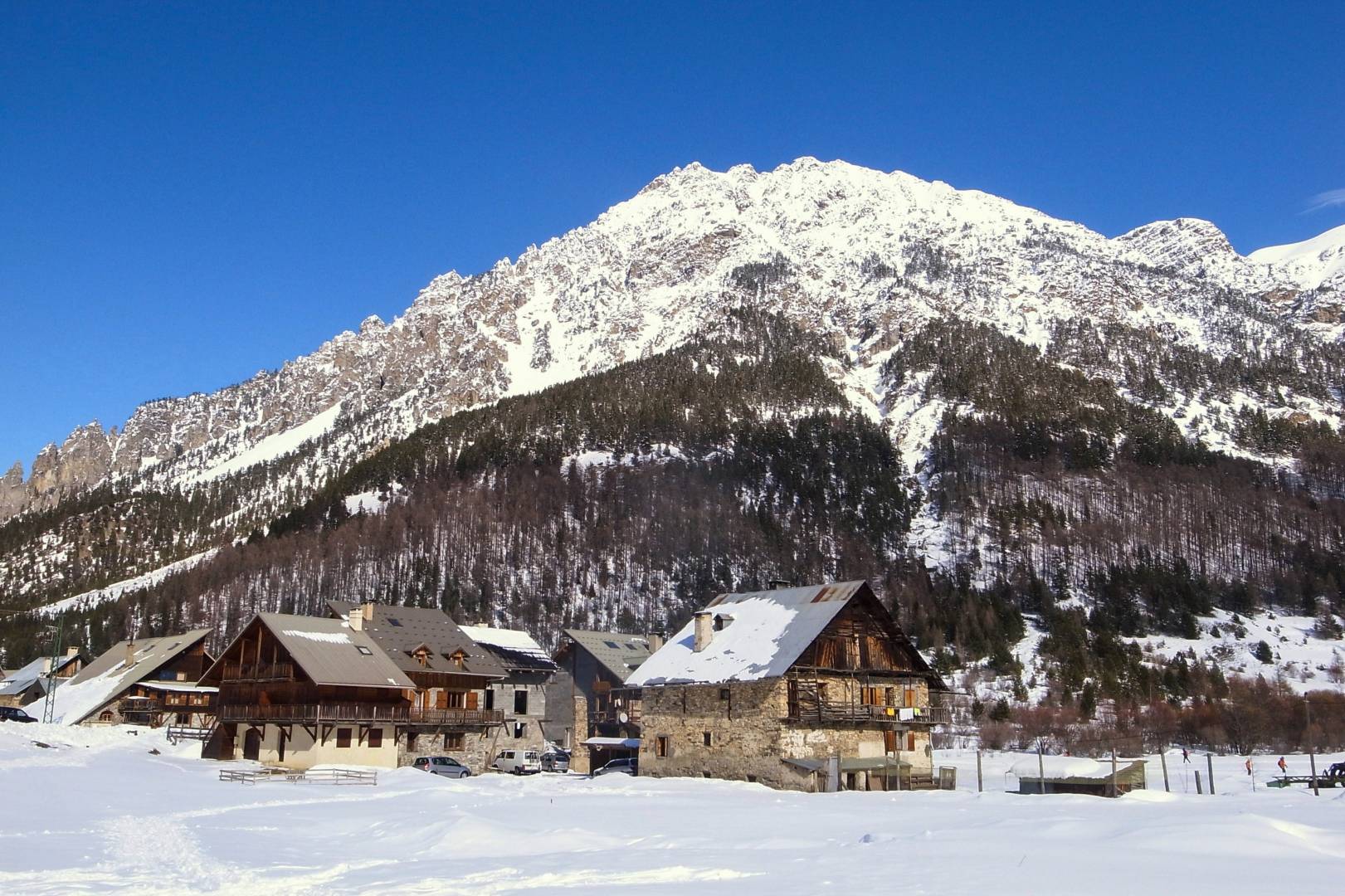


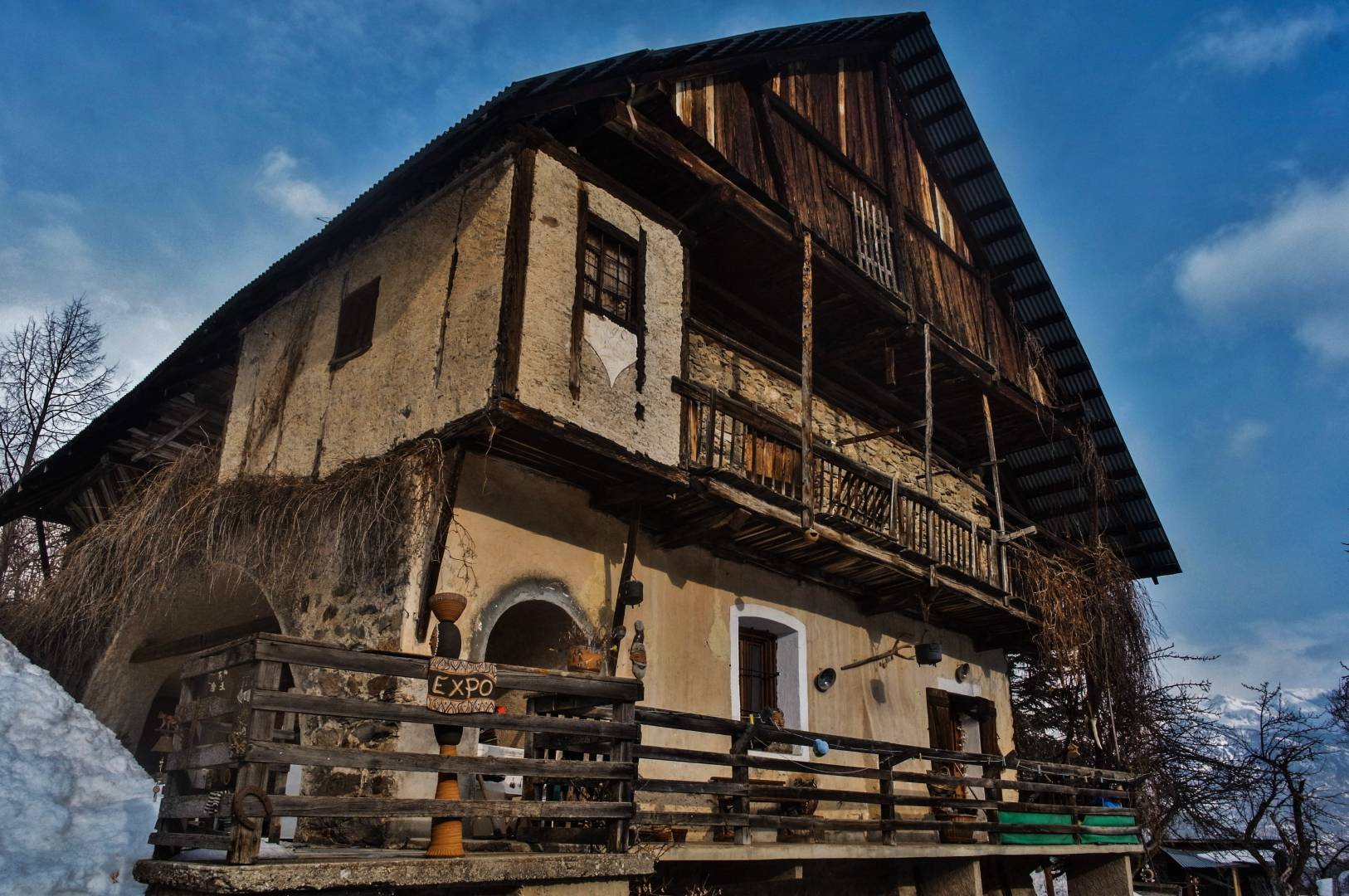
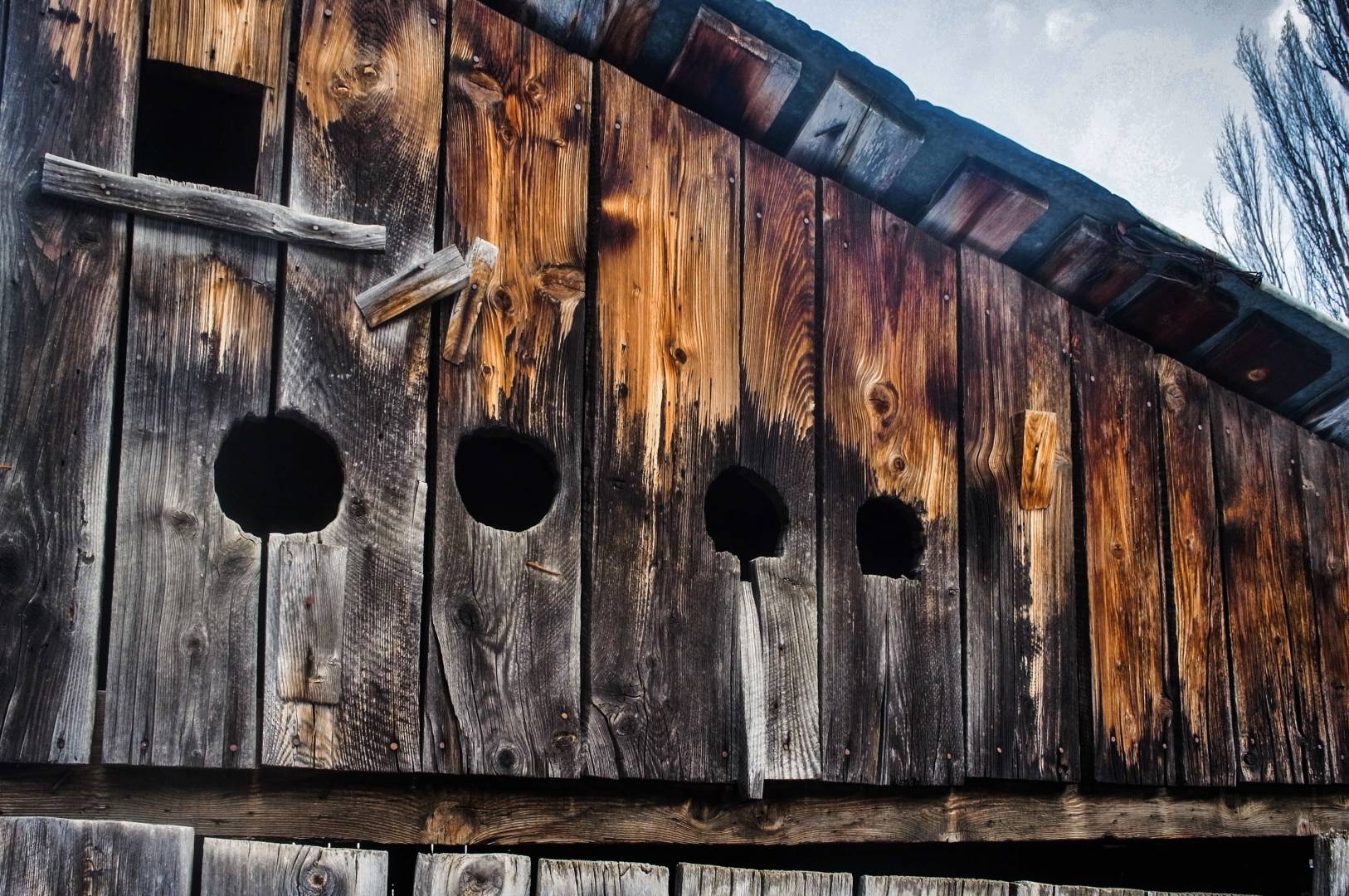
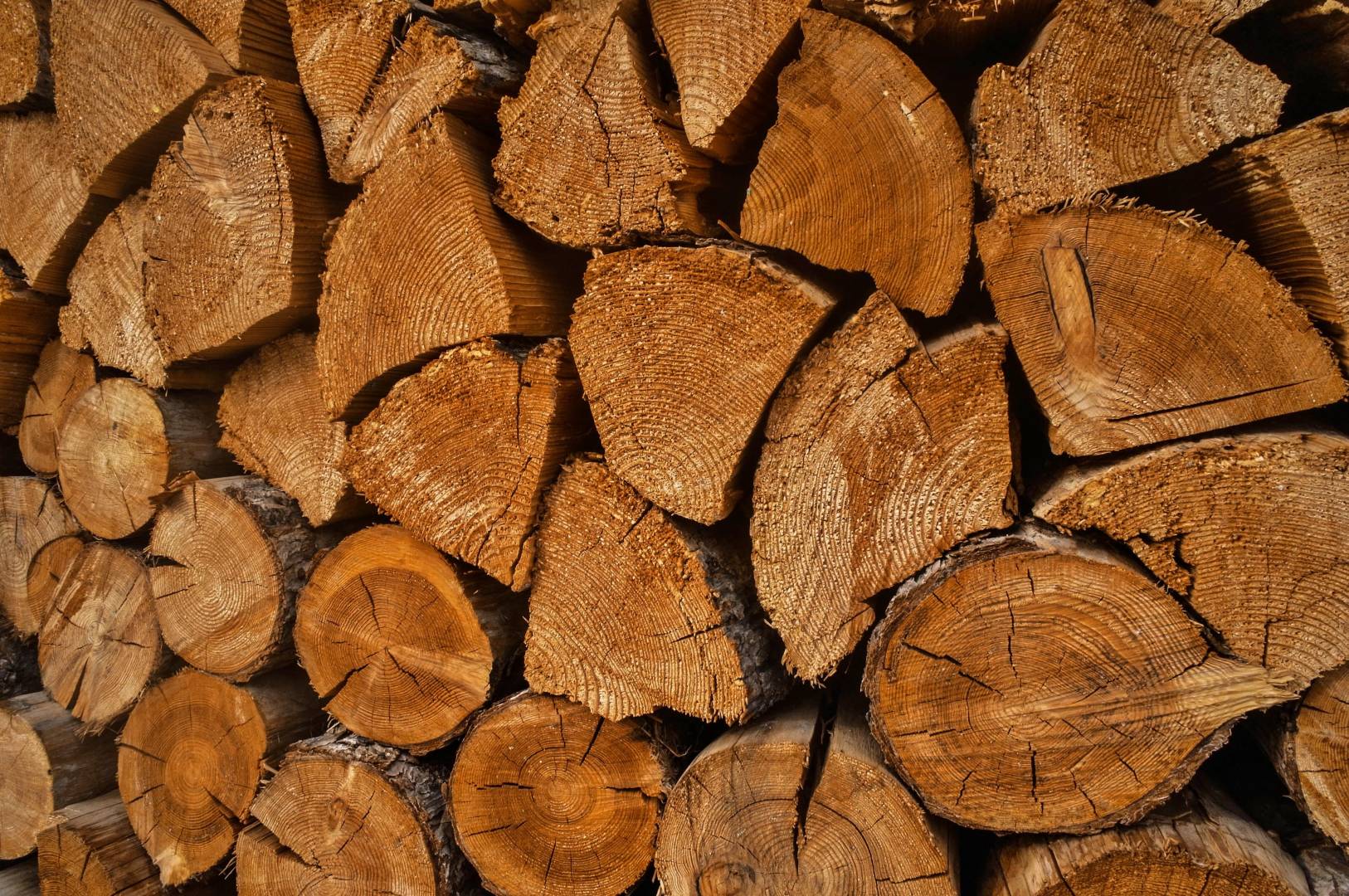
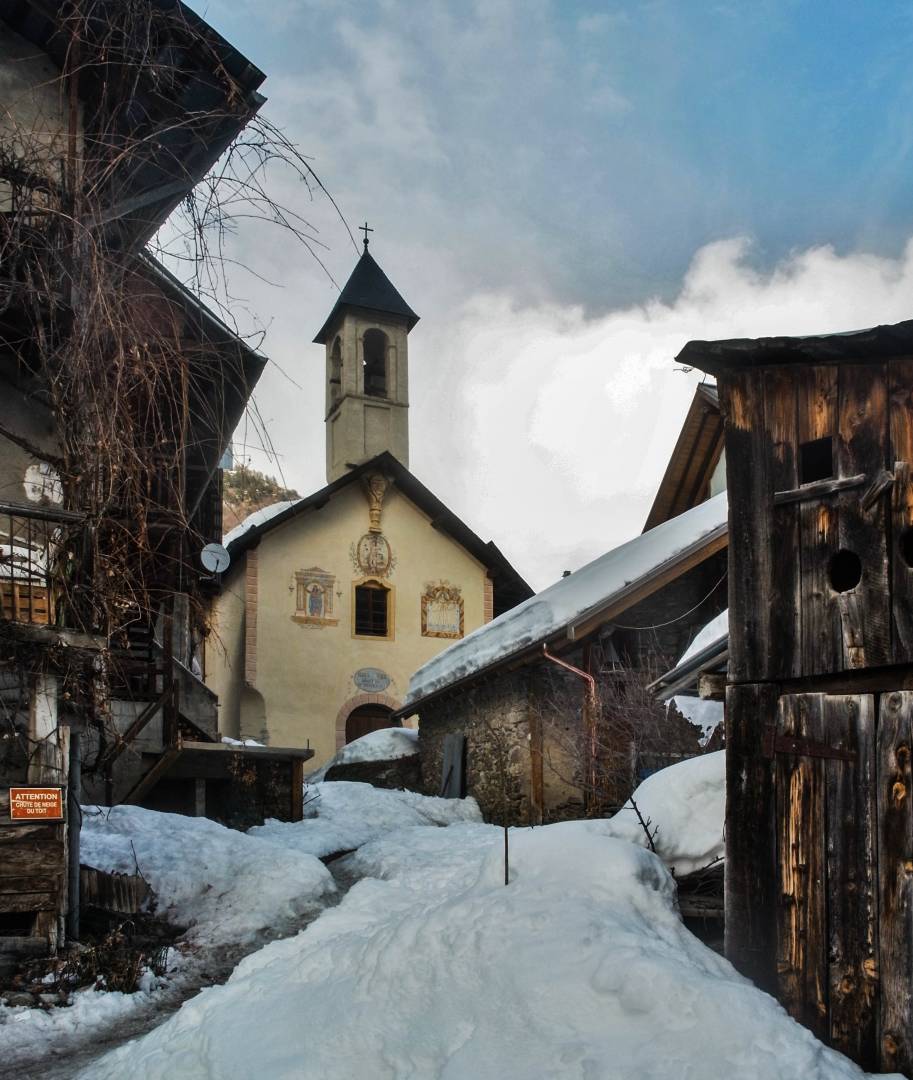

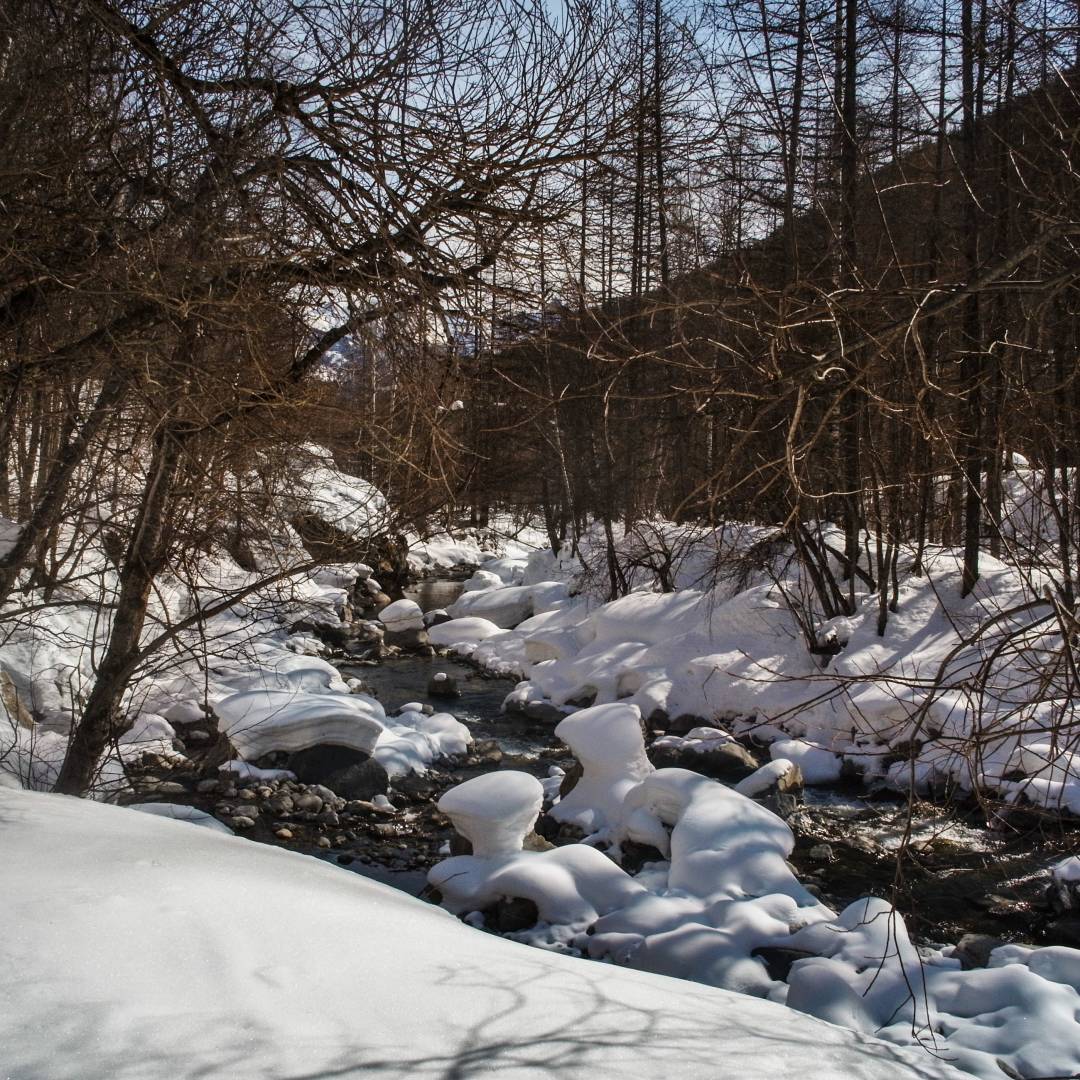
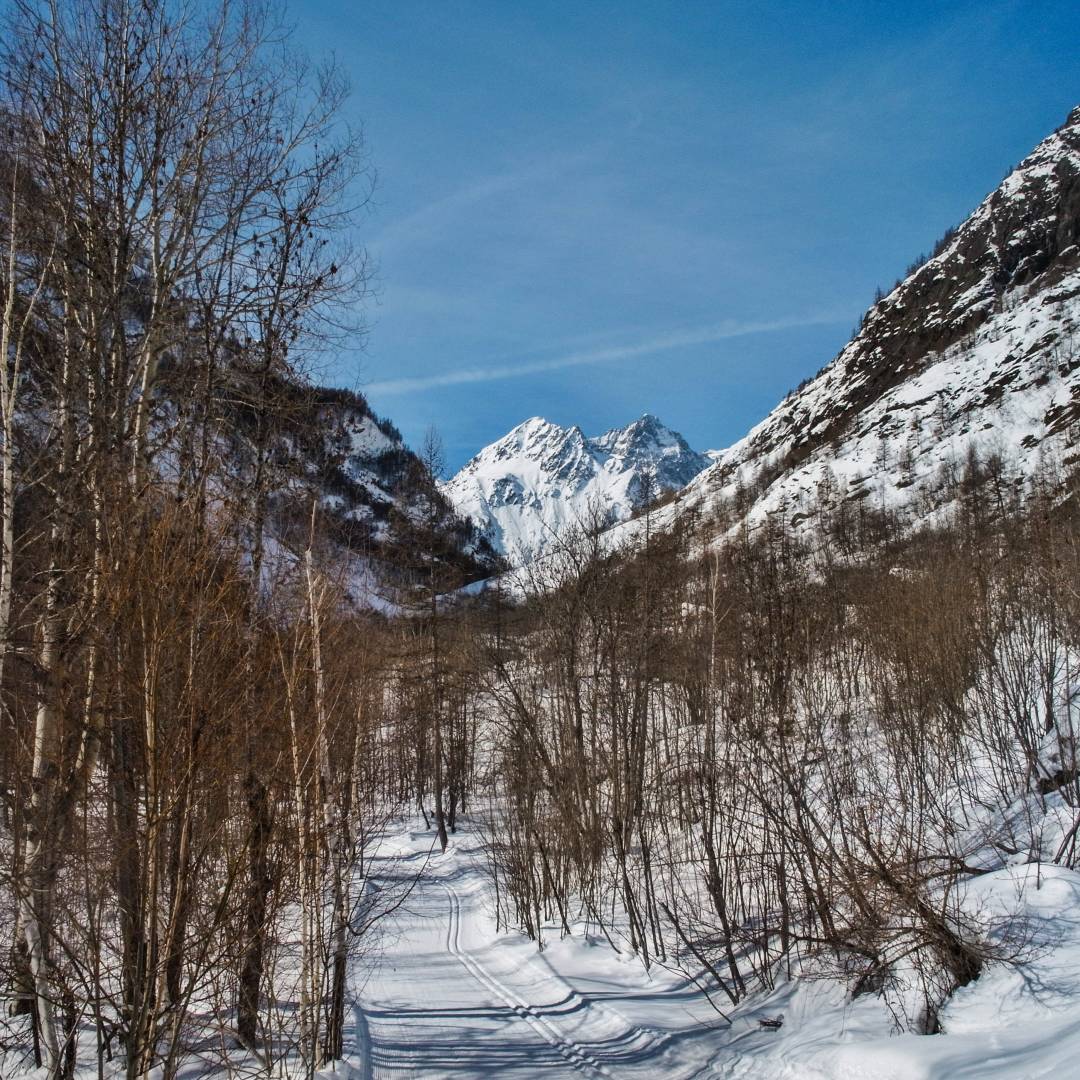
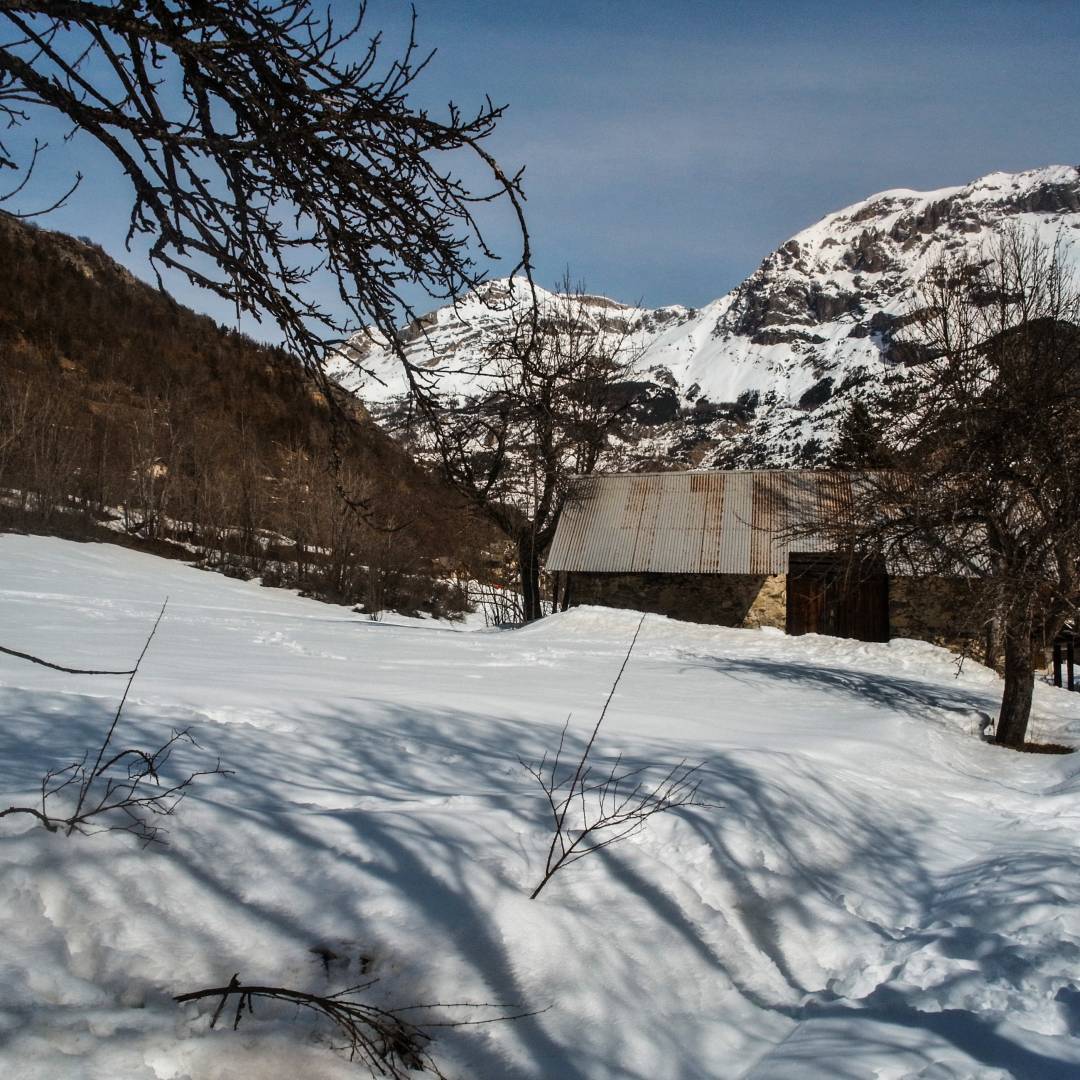
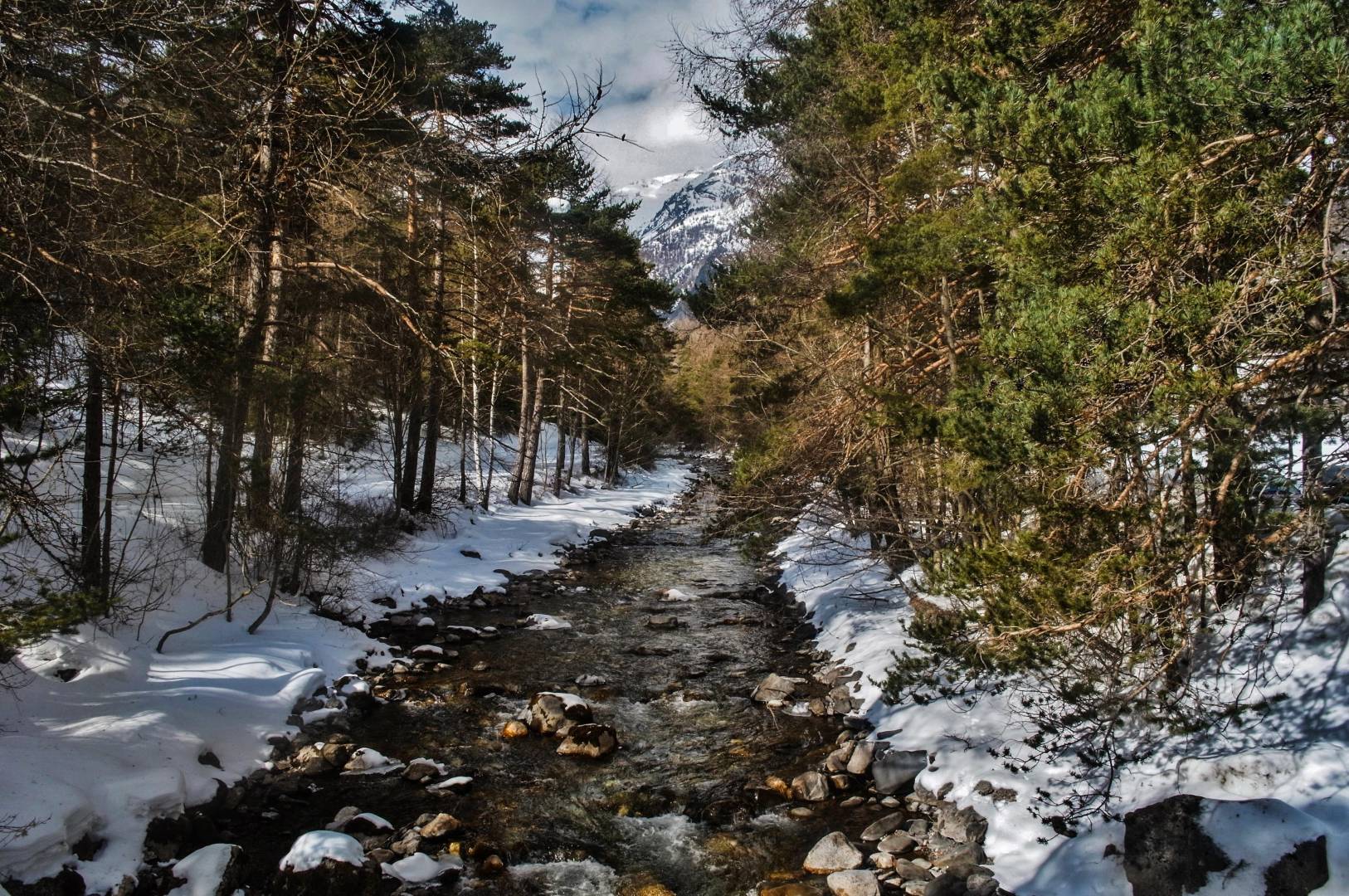
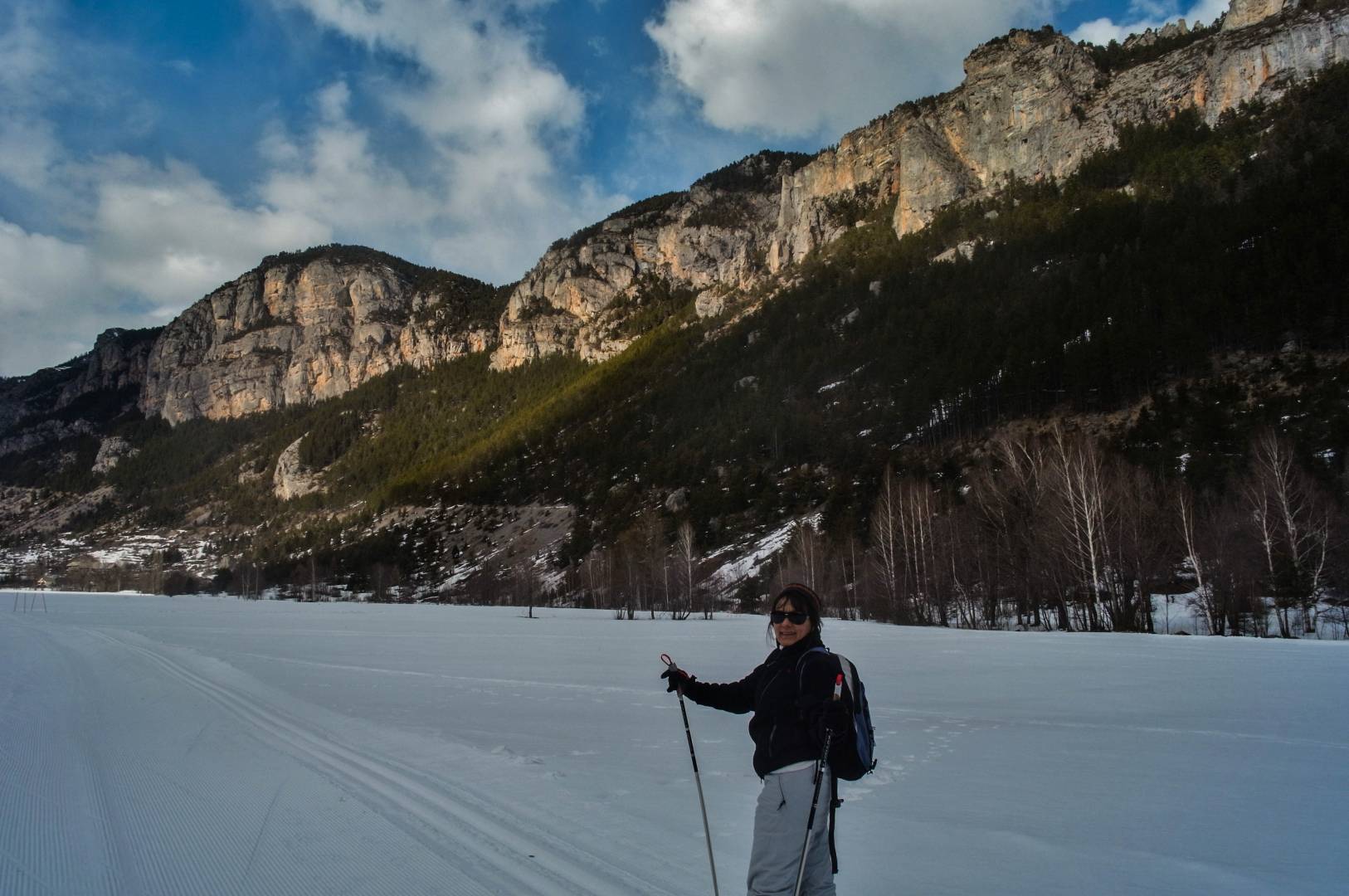
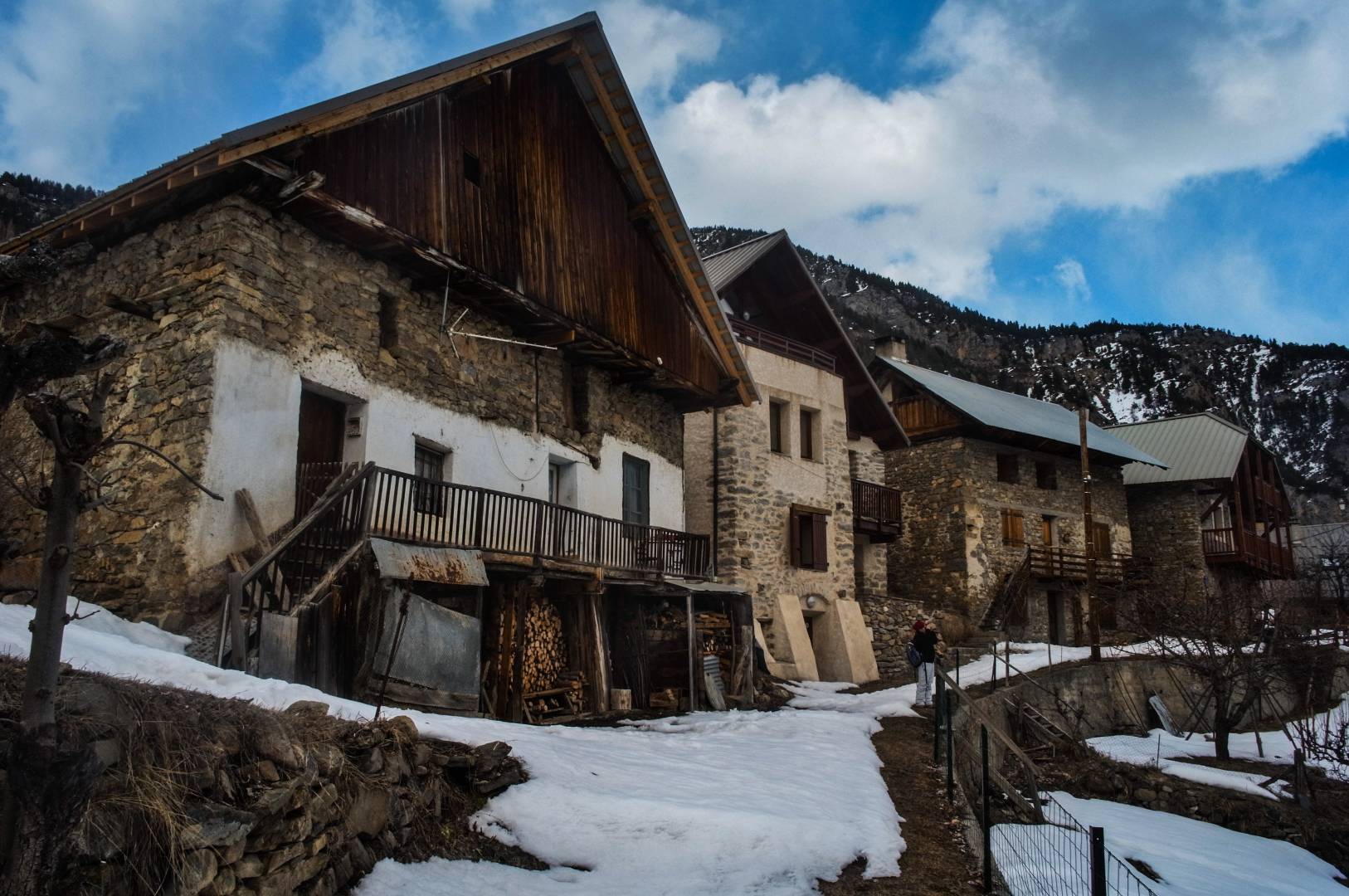
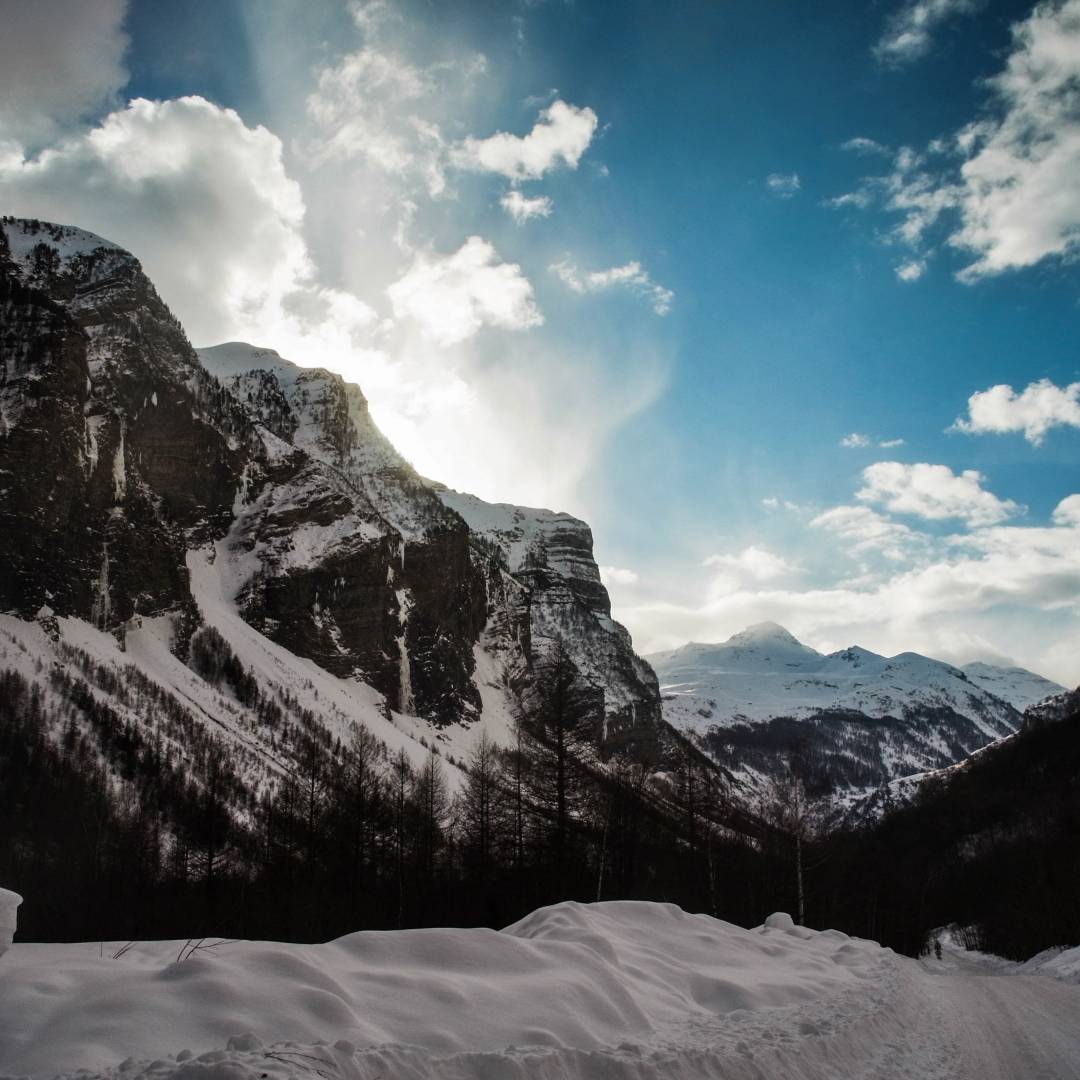

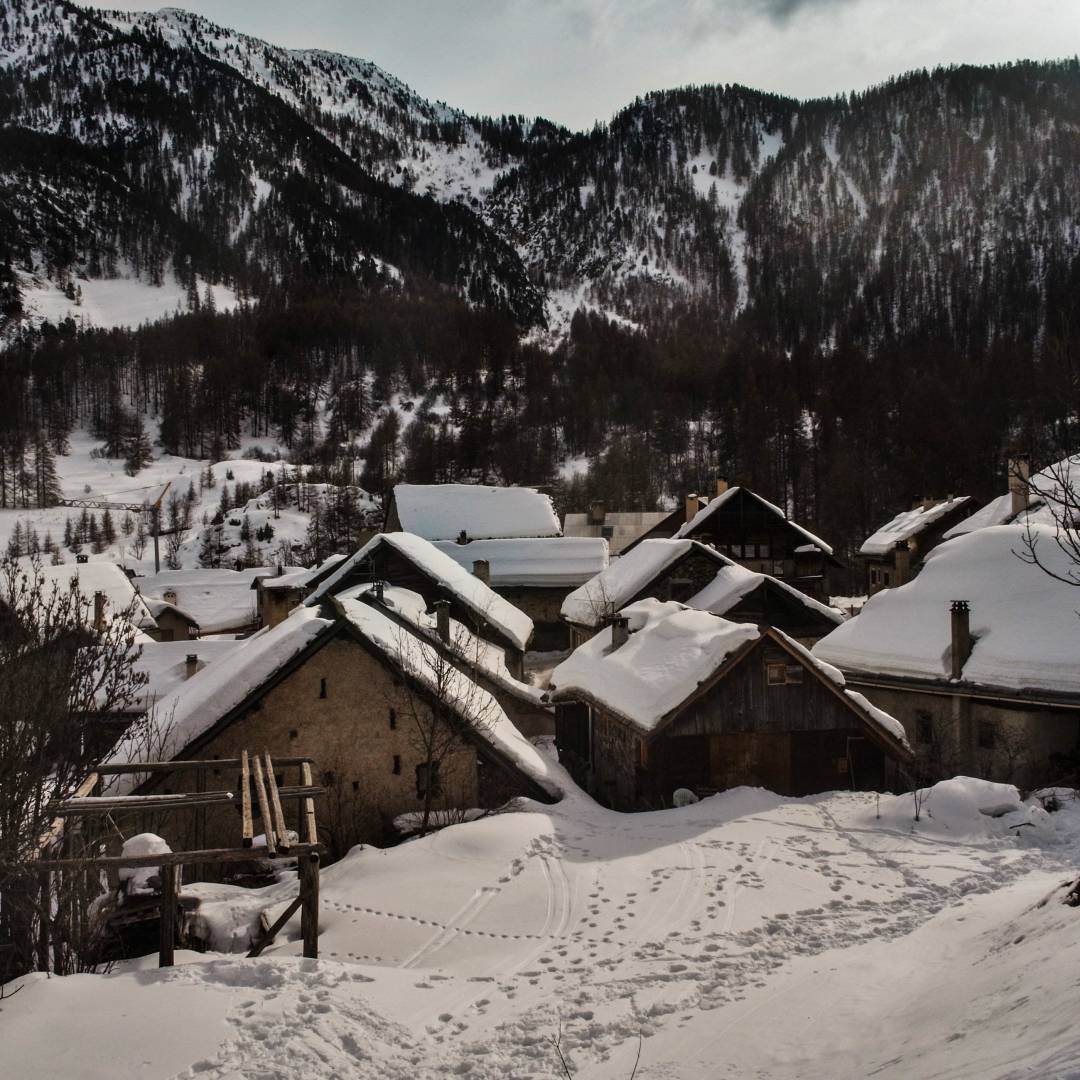
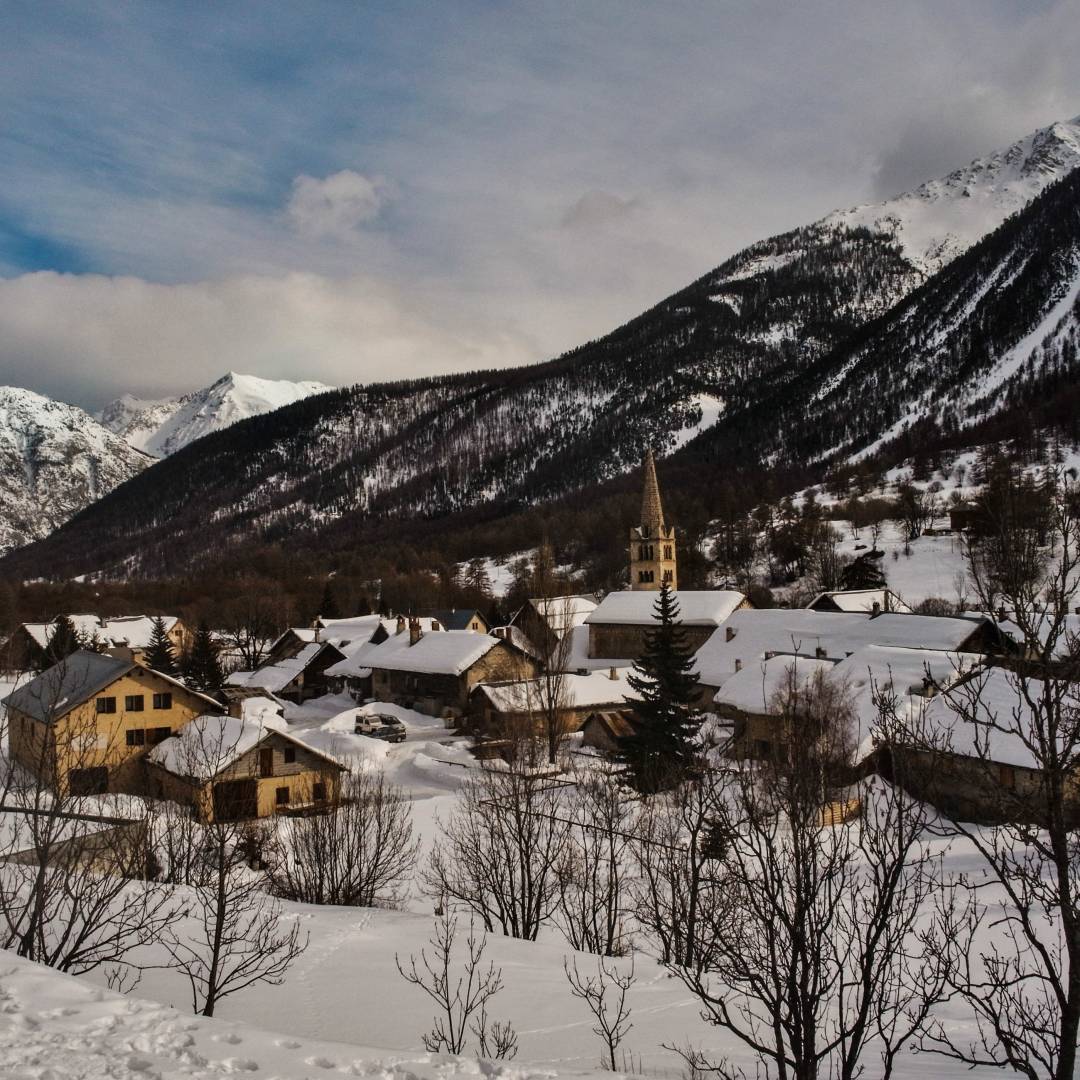
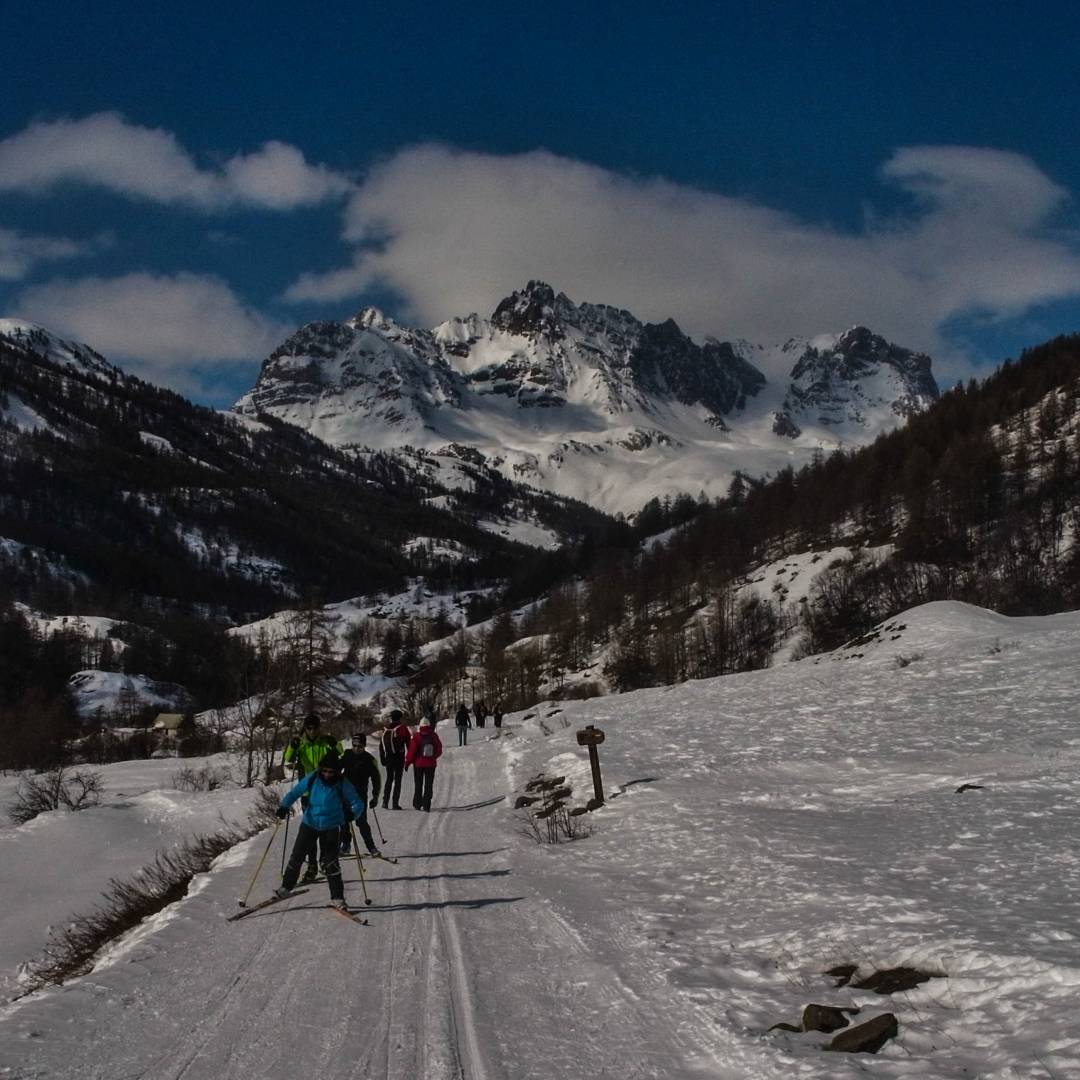
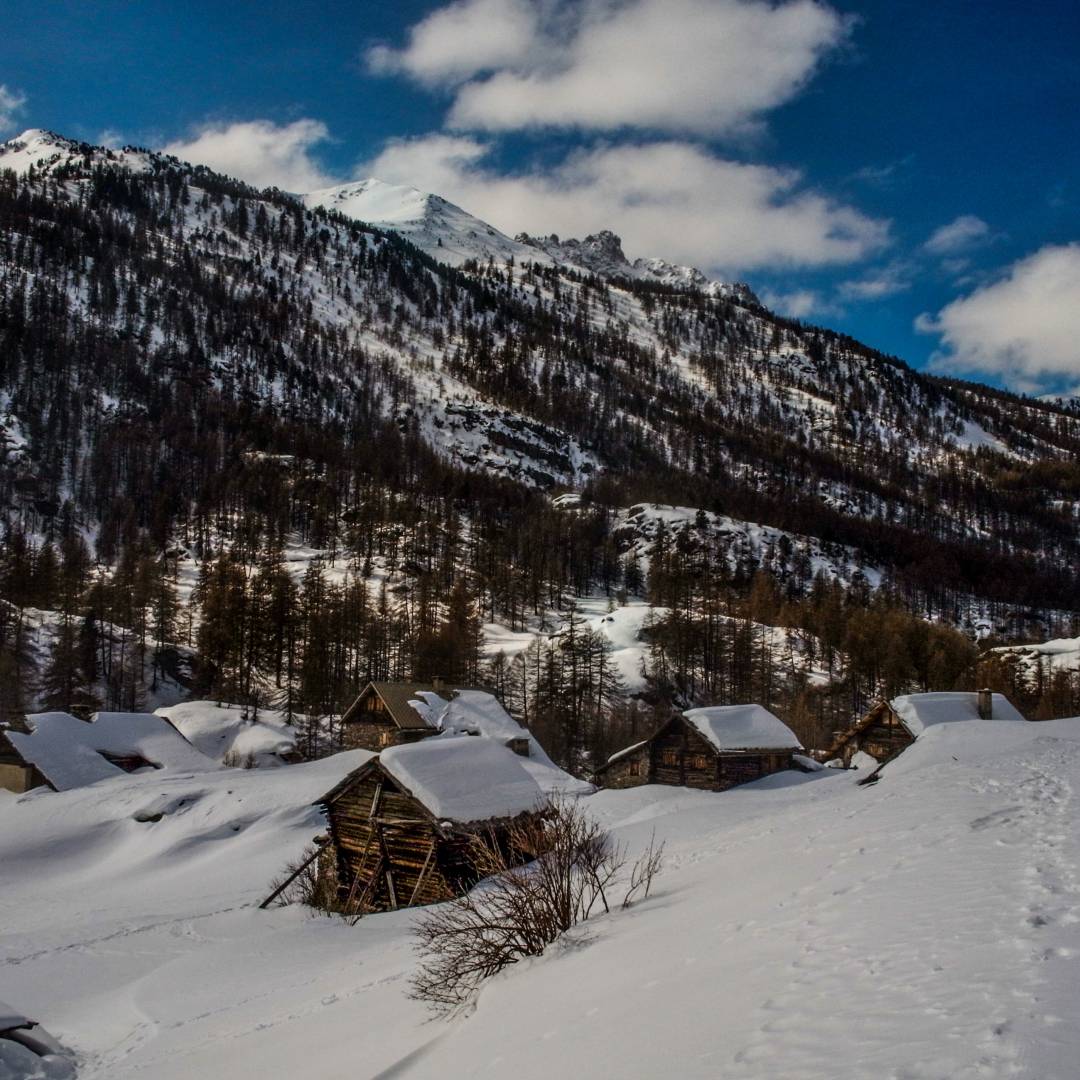
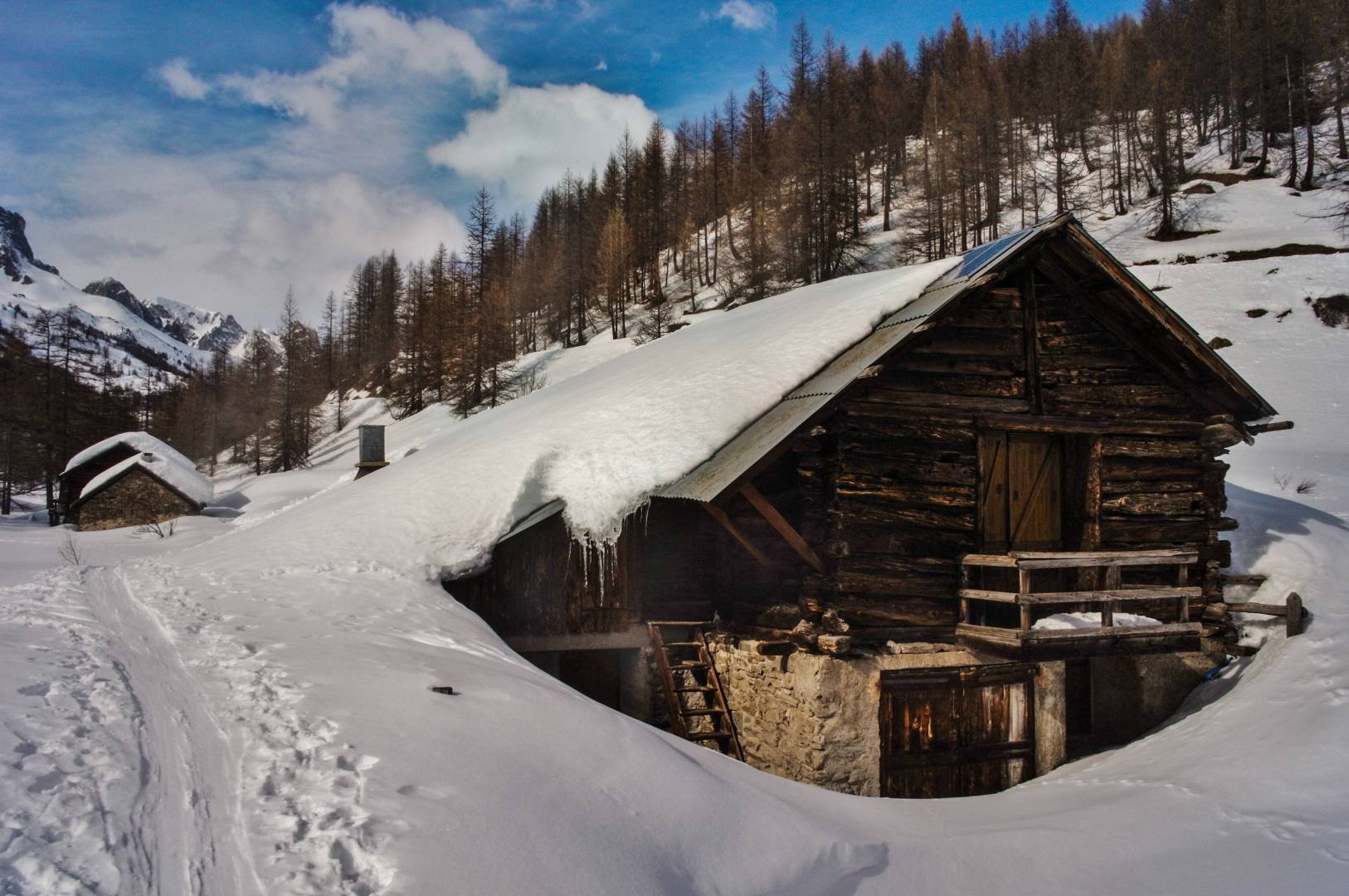
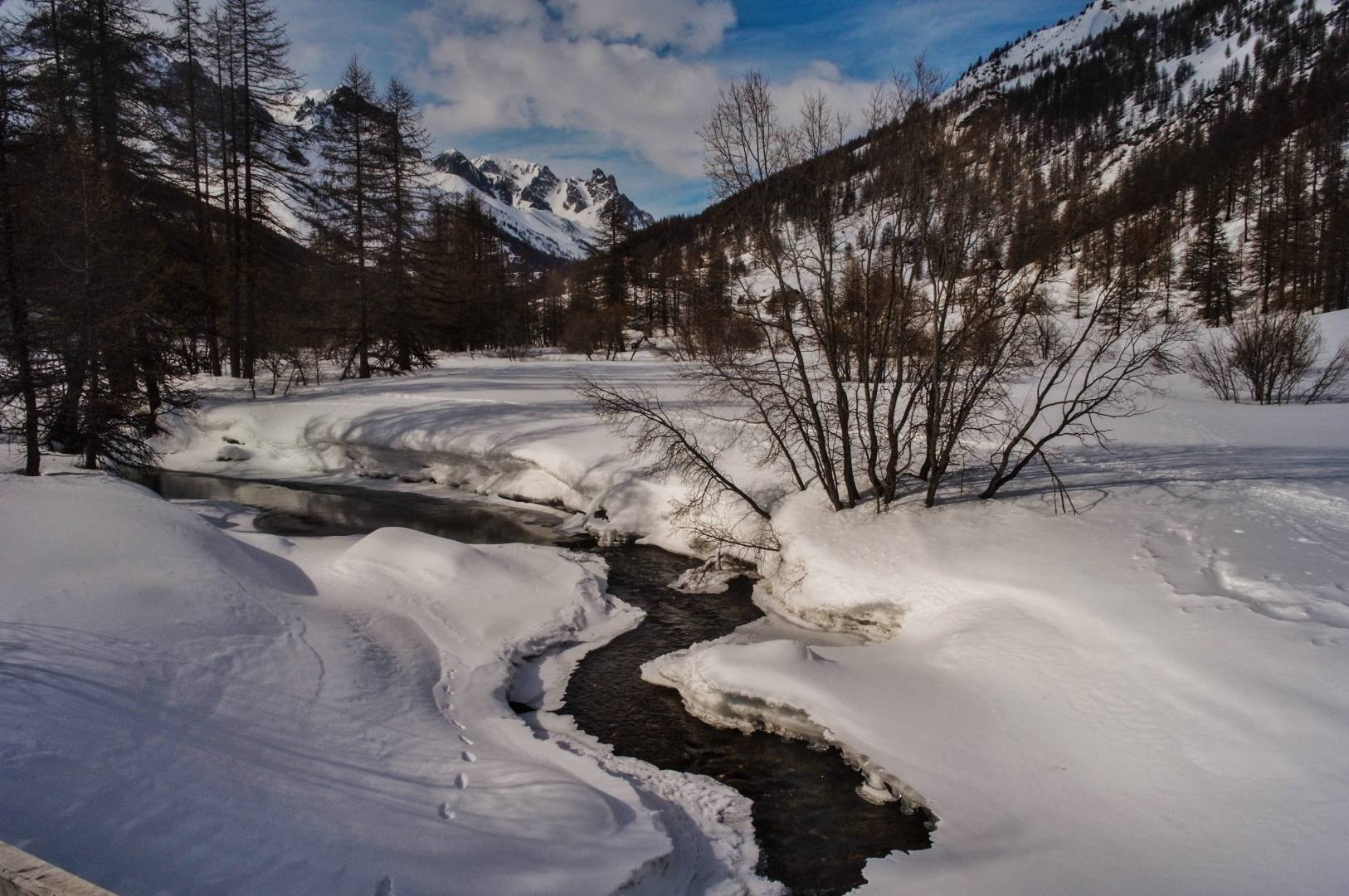
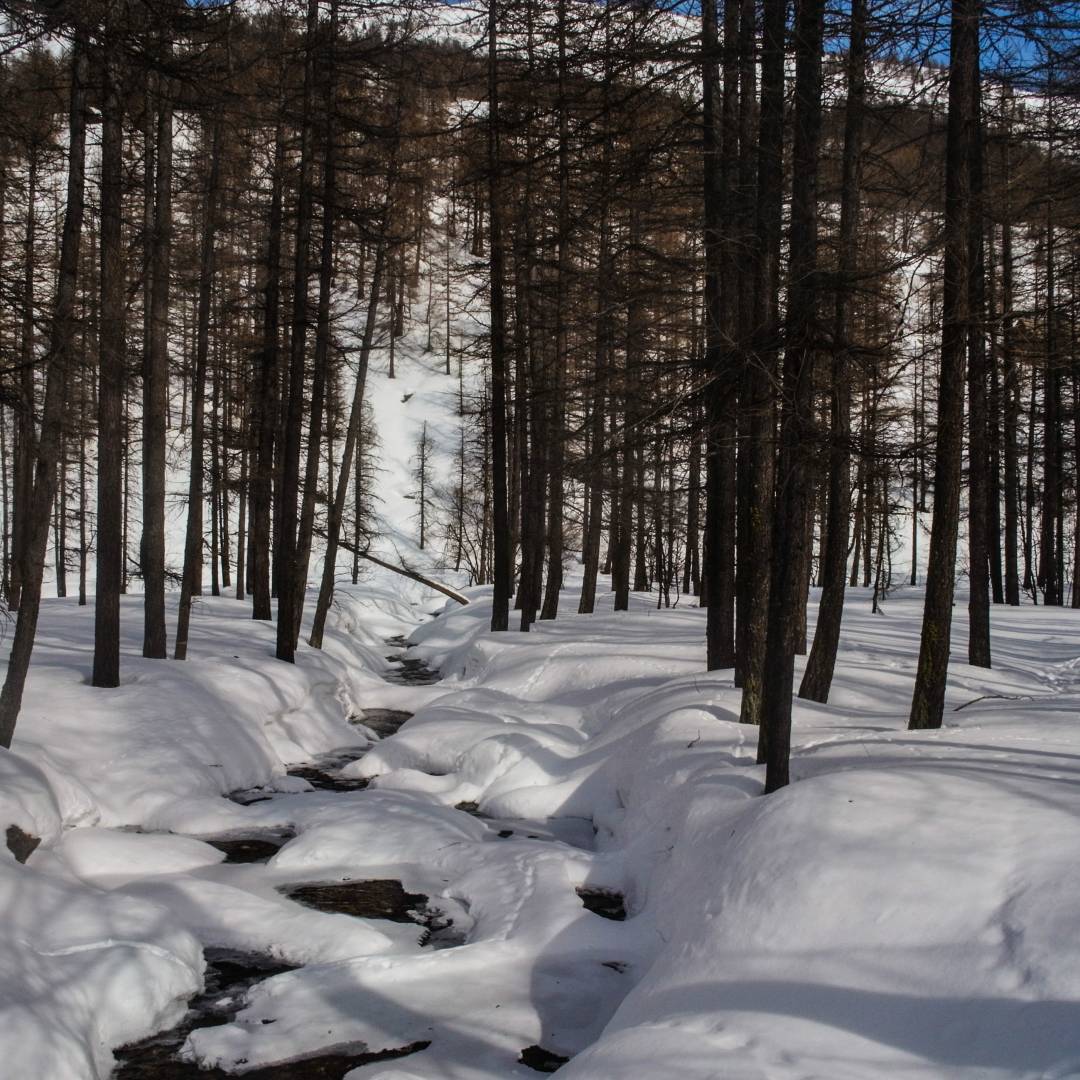
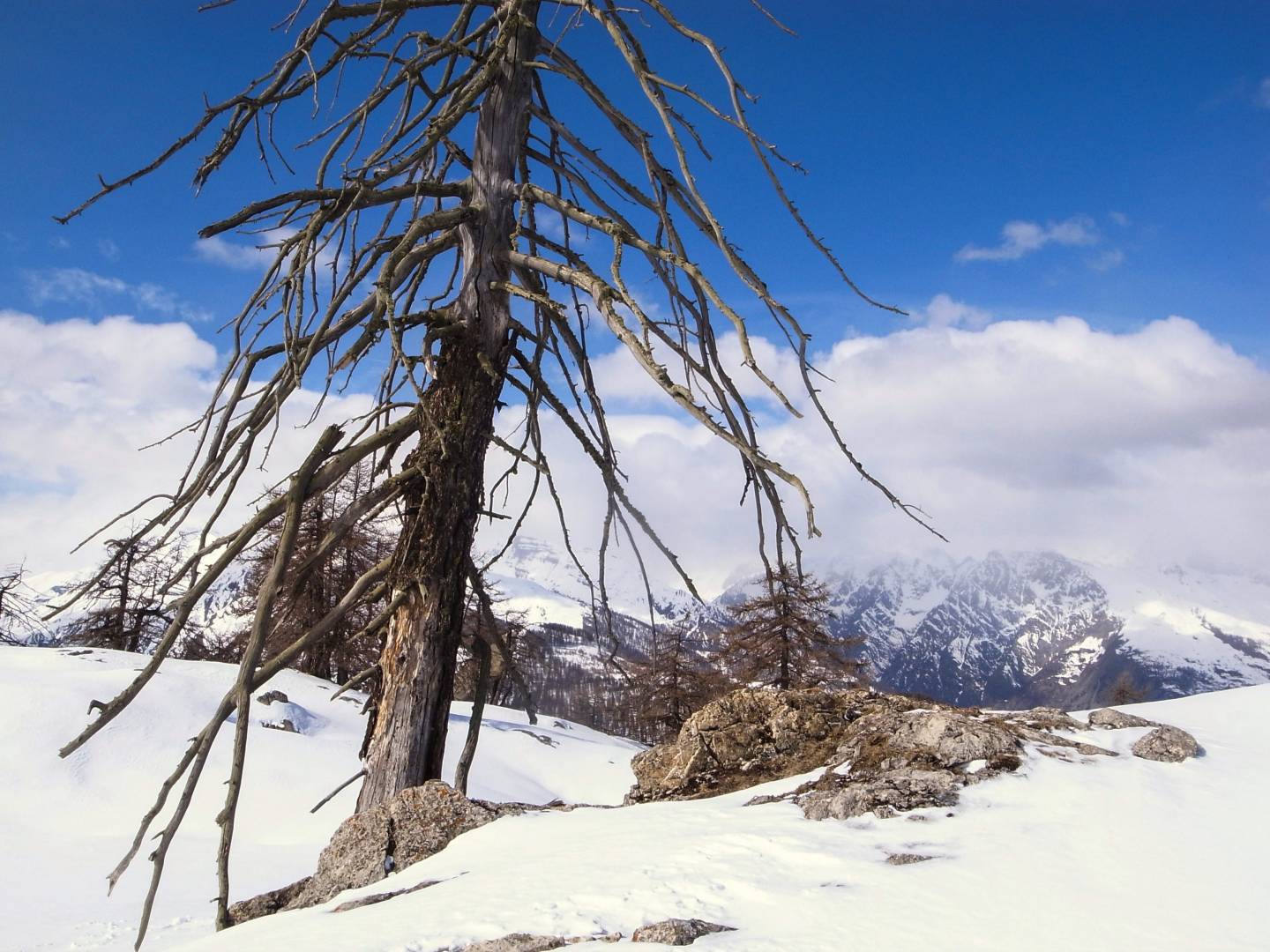
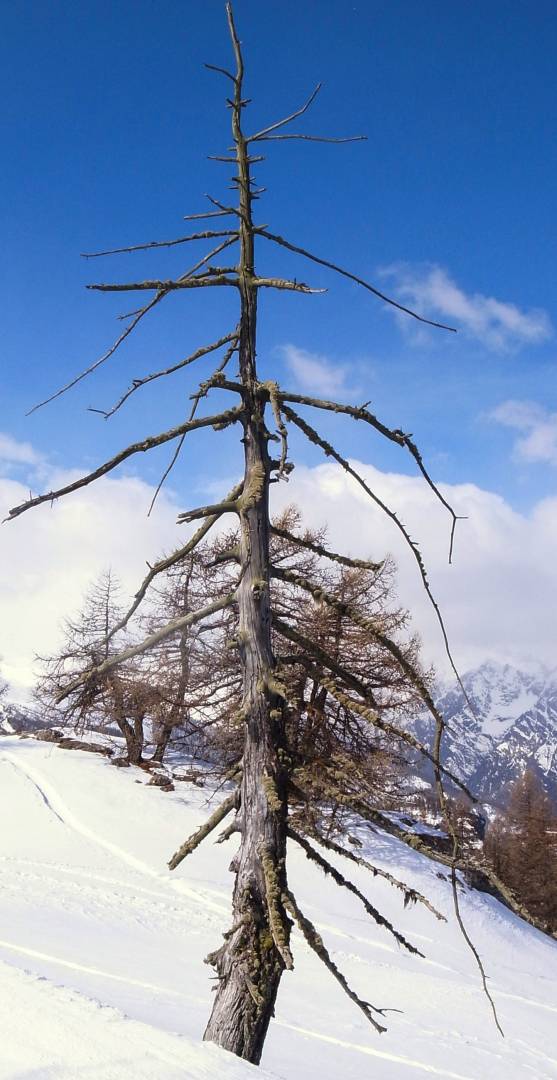
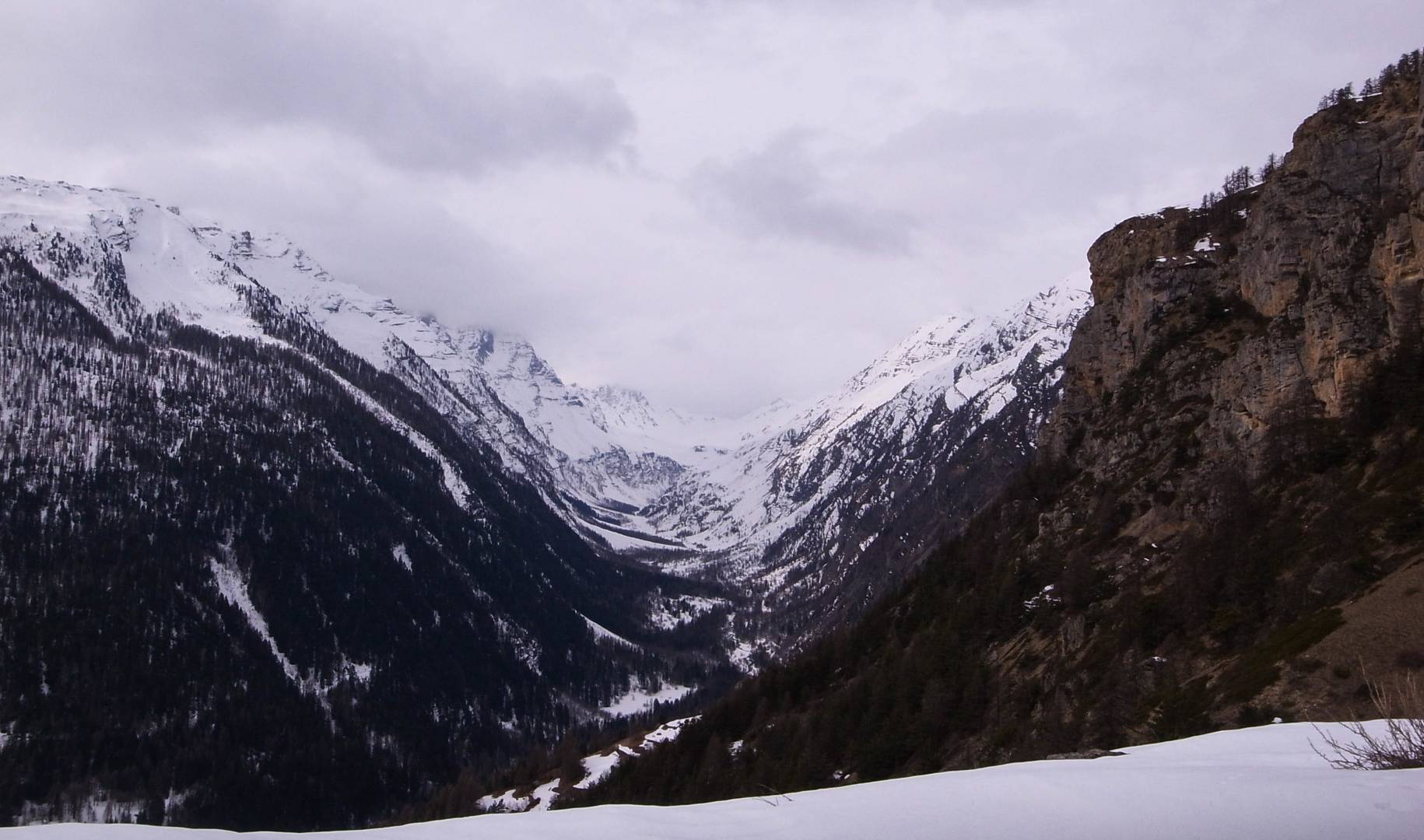
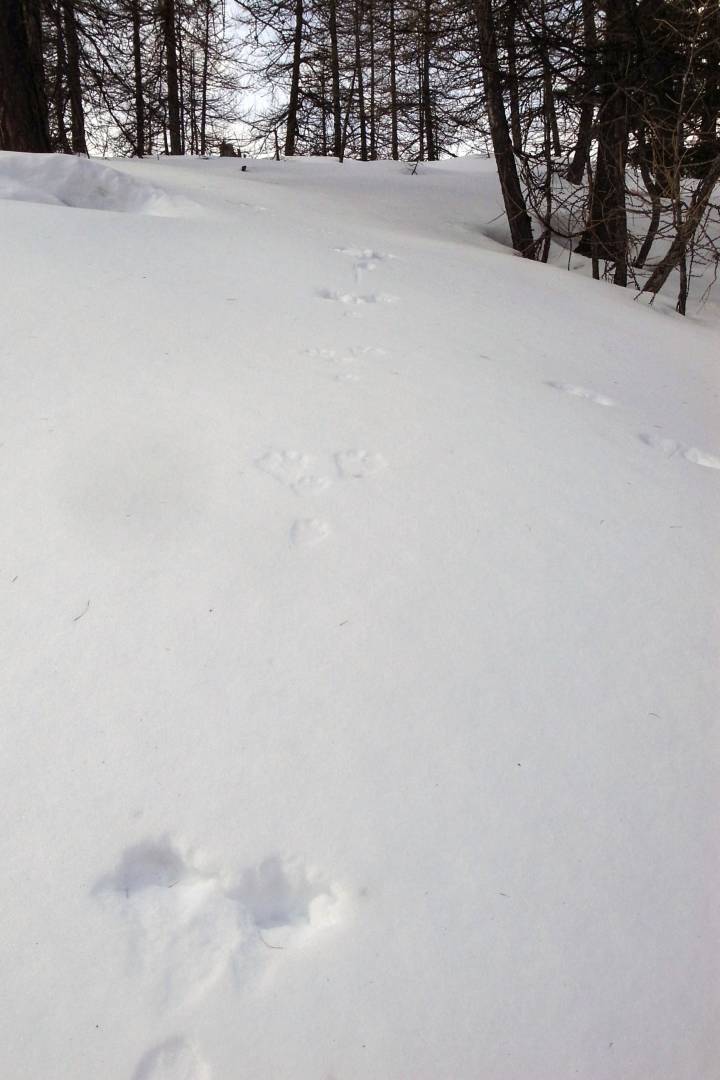
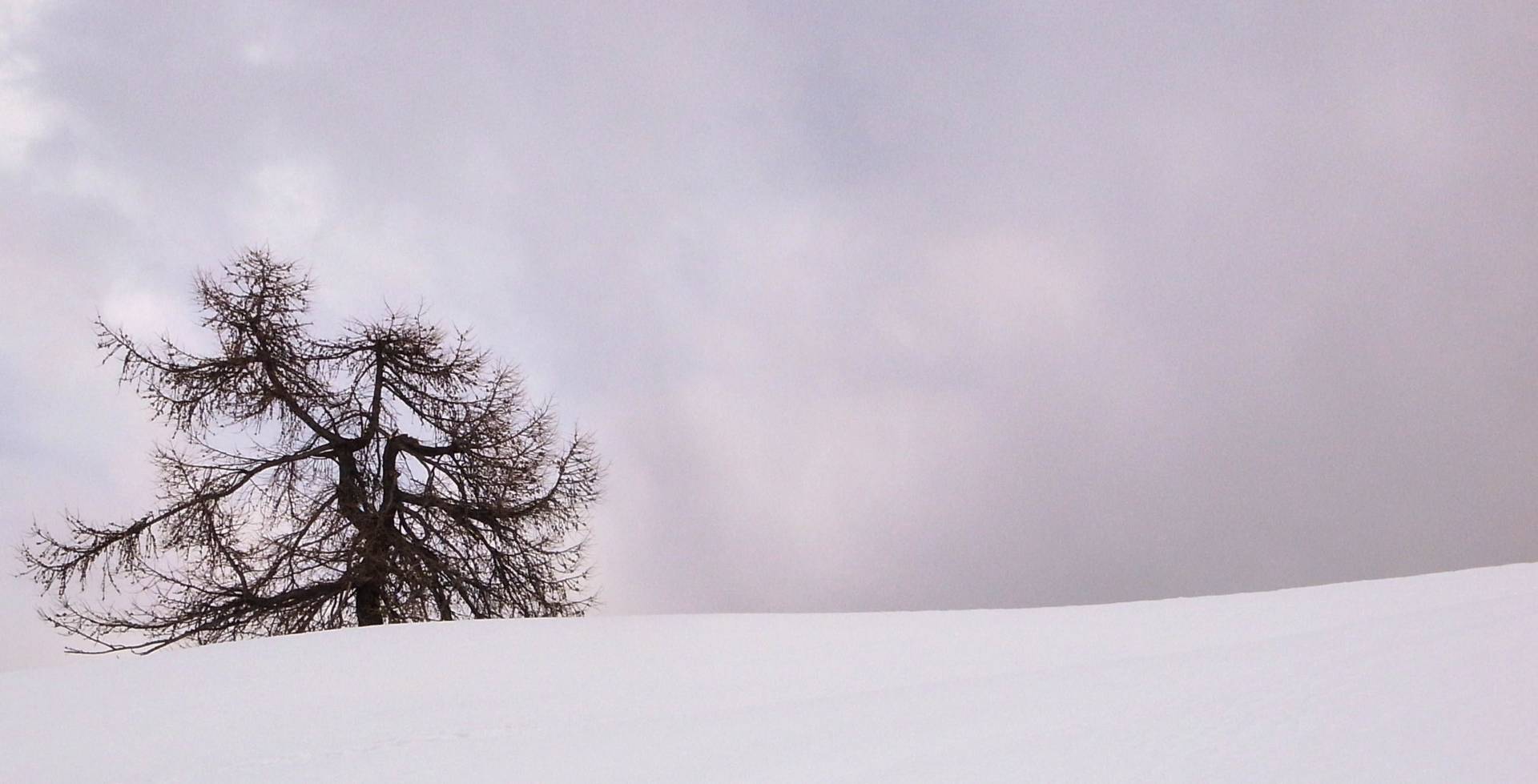
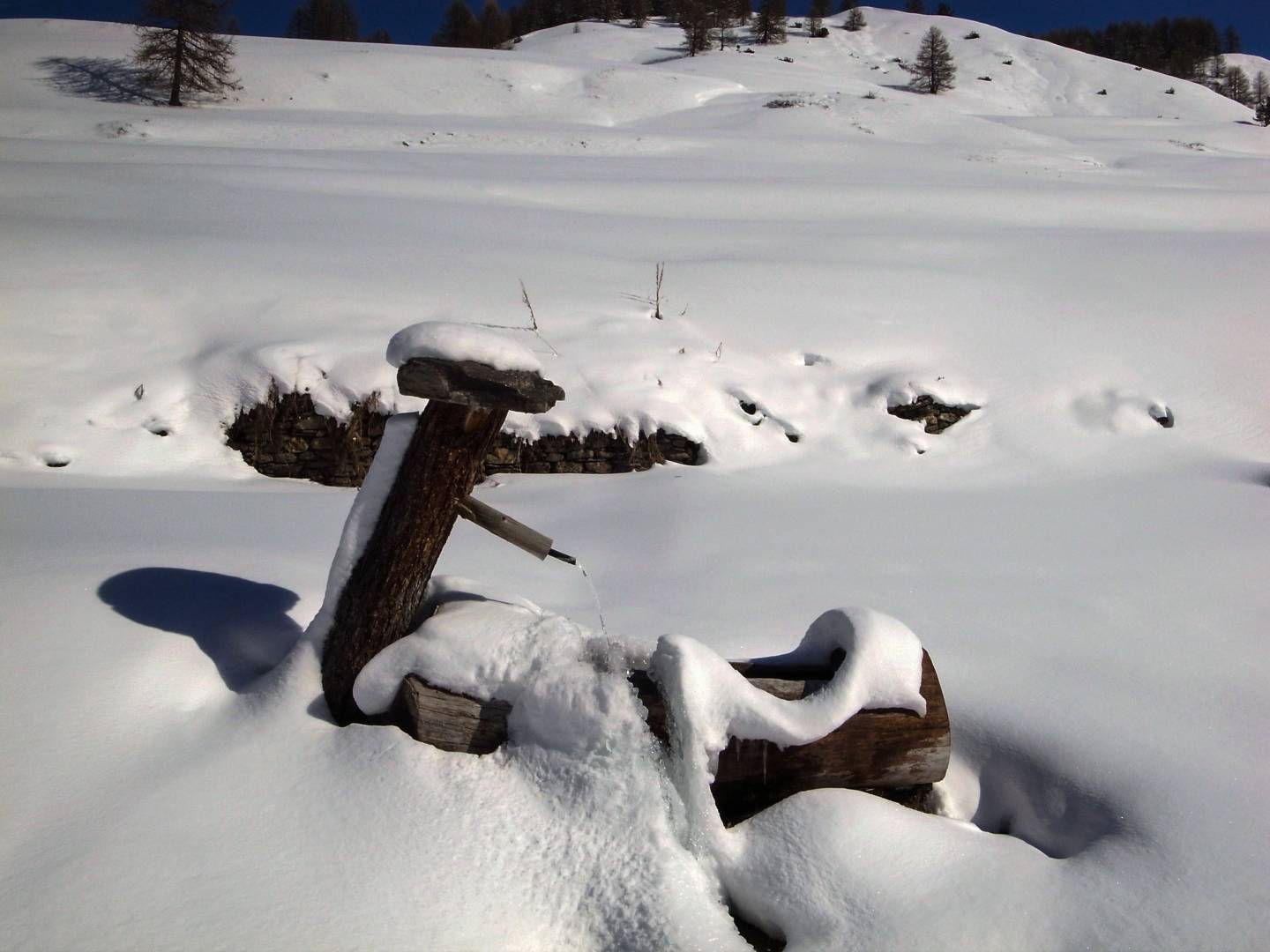
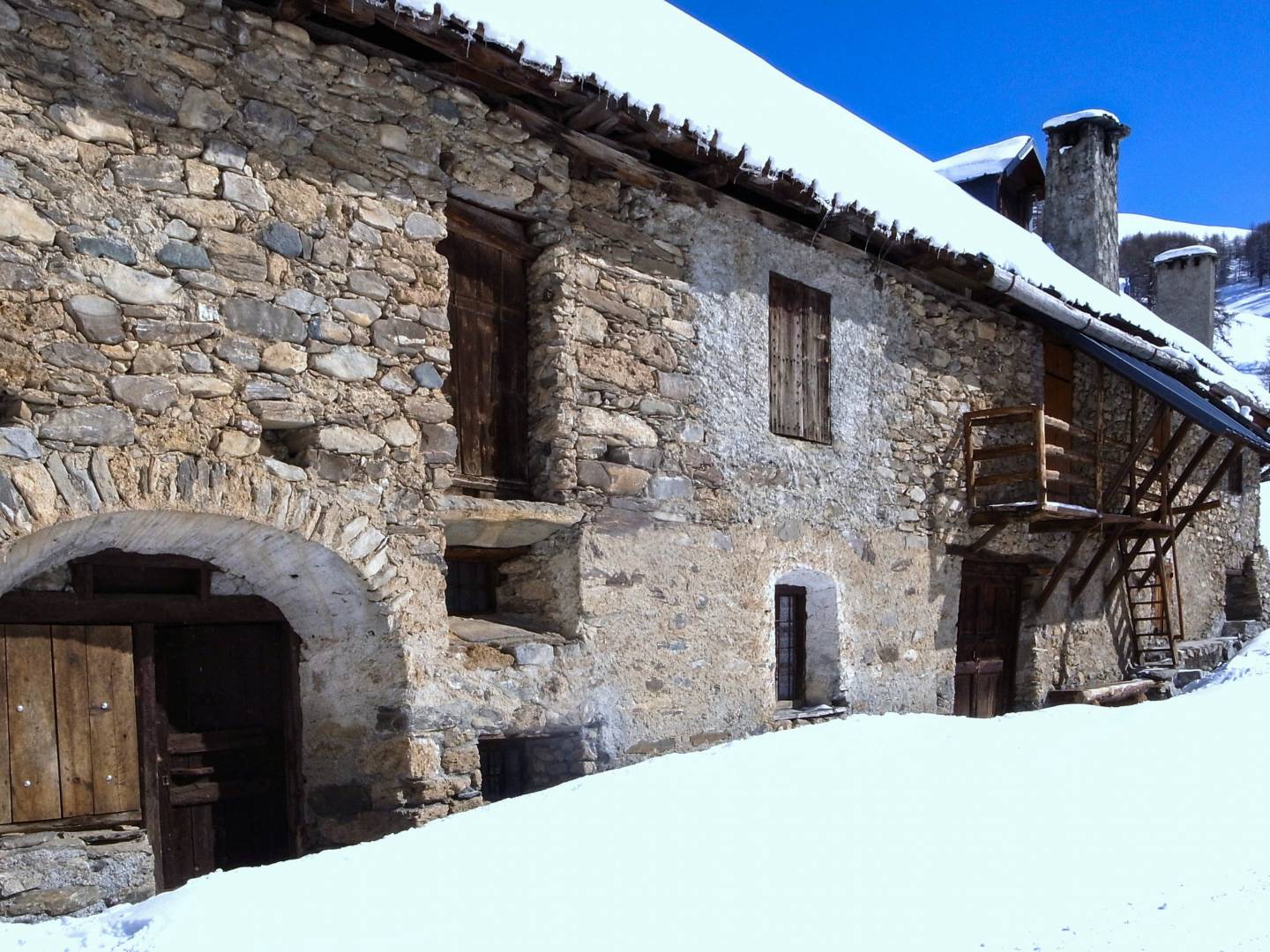
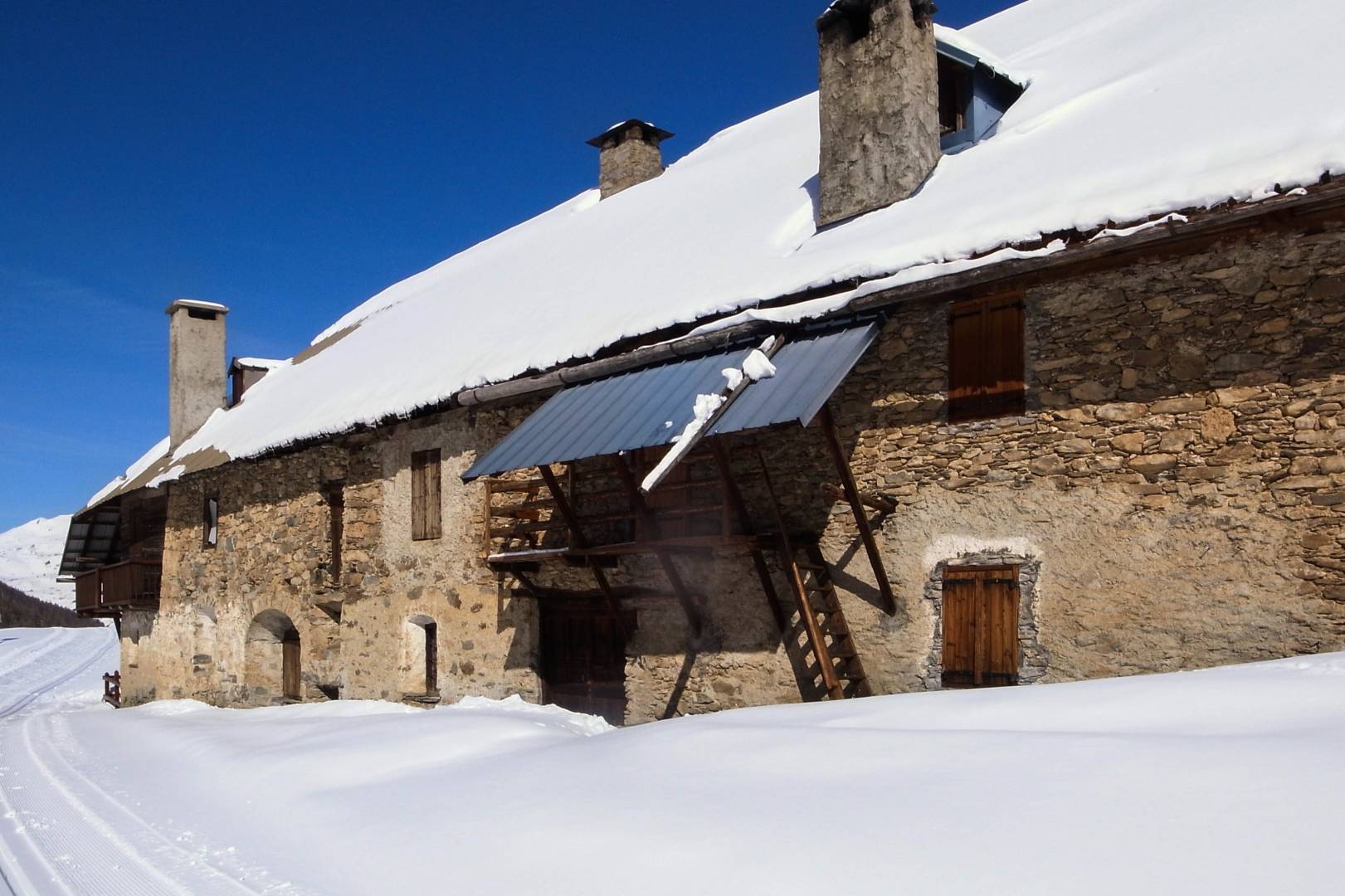
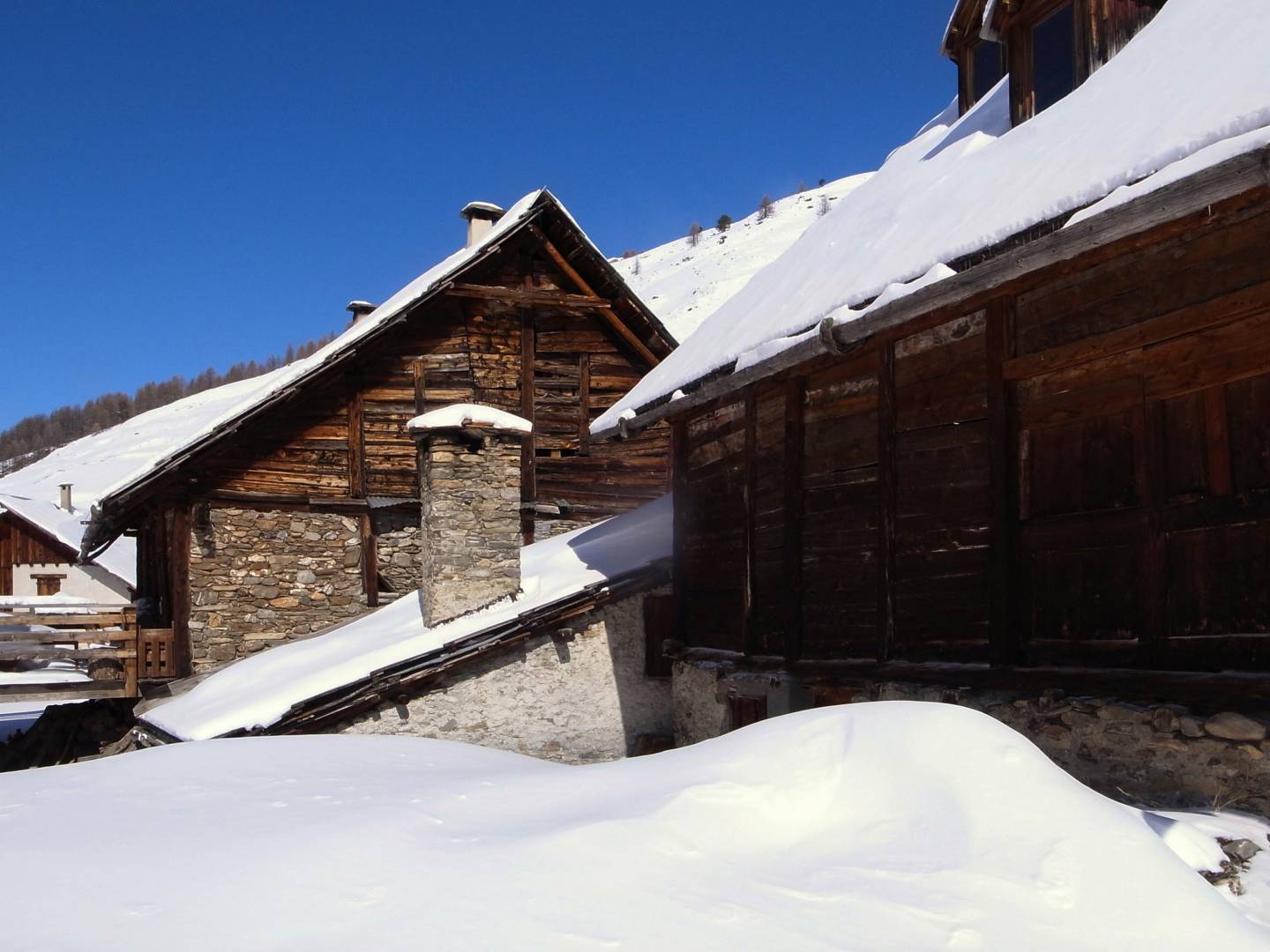
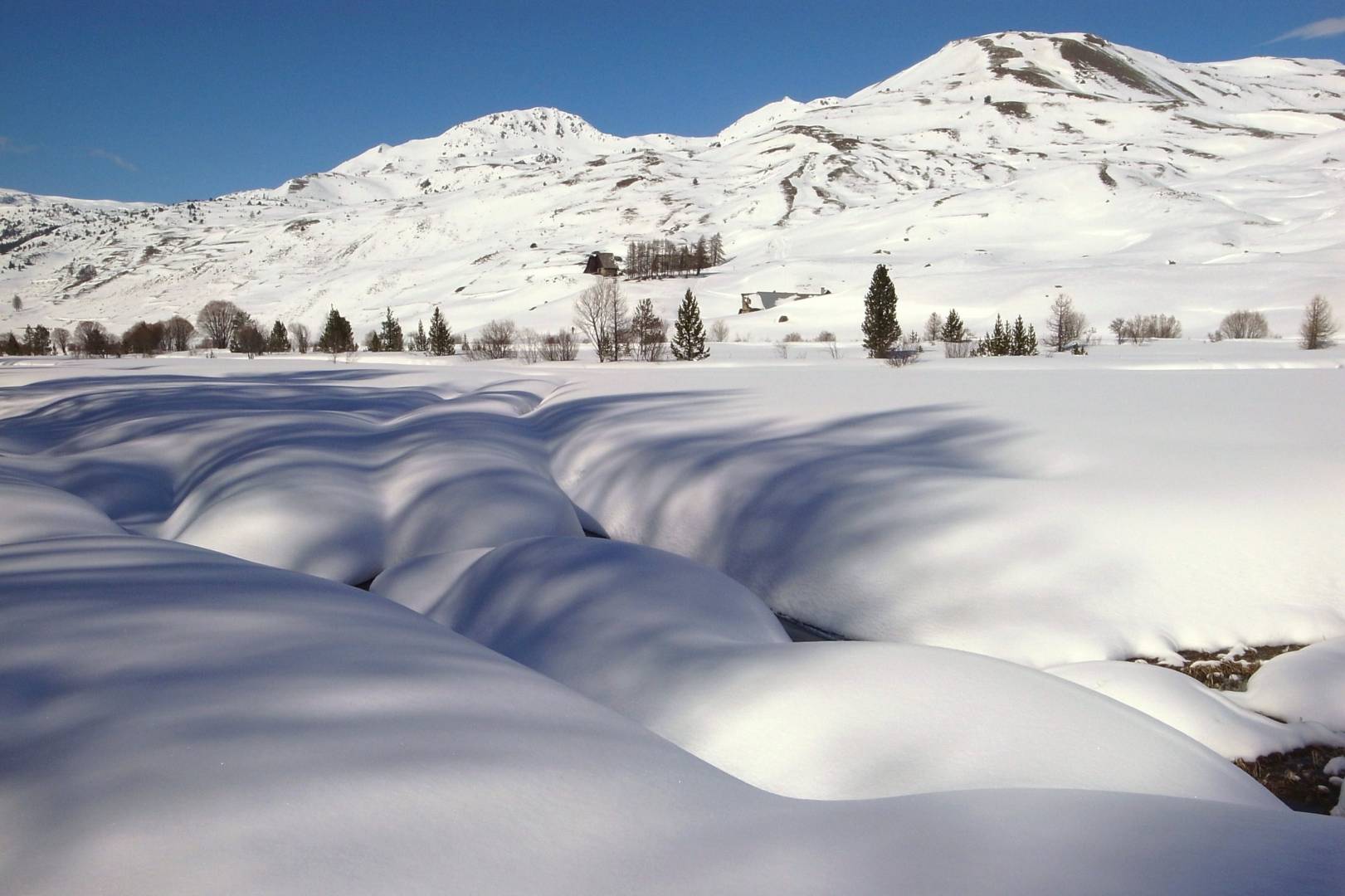
Just thought I’d add my thanks for the great photos and wonderfully informative article.
Thanks Steve. Glad you enjoyed the article
Delighted to hear we have Kathmandu images to look forward to! Have a great trip
I want an X100V so much but an X T4 more. Suits my photography better. Can’t have both and remain married!
All best wishes
Thanks David for the kind comment. The area is beautiful and I’d really like to go back in a few years. The area offers many photos opportunities all year round and the ricohs with their 28mm lens are just the perfect tools for landscape and architecture. Adding the 21mm add-on lens would be close to perfection. It’s light and can be carried just anywhere. The larch trees are beautiful especially in autumn when the needles are turning gold. I’m off to the Kathmandu valley in a couple of days. I’ll pack two of my ricohs. Did you fall for the new fuji X100V? I’ve seen some darn good images on internet with pre-production cameras. If I were a fuji shooter I would certainly buy one.
Enjoy the weekend
Another cracking set of images, Jean, with the Vallouise just as beautiful in Winter as in Summer. As before, I love the broad landscapes and the detailed architectural shots which you you do really well. I particularly admire the second tree shot in the Col de la Pousterle section. The subject is right in the centre and that is just right for this shot because the crazy angles of the branches and also of the middle ground sloping right away give this shot oodles of dynamism. Well done! I also like the tracks of the mountain hare (or was it one of Hannibal’s smaller elephants?) leading the eye to the treeline.
Thoroughly enjoyed this article. Please Jean can you go away on holiday with your camera more?
Excellent images Jean. The little Ricoh cameras provided good rendering of the snow, not blown out at all.
My approach in cold climes has been to allow my little Leica C to live just under the first layer of a shell jacket, so that it is always somewhat equilibrated with the colder external temp. But at night the batteries sleep with me in my sleeping bag, otherwise they take too long to wake up.
That said, condensation can rear its head in warm climates too. On a small boat cruise of the Mekong River a couple of years ago a Nikon DSLR guy had a lot of trouble with his monster lenses fogging during the night in his air conditioned cabin contrasted with warm humidity outside. Or maybe it happened as soon as he took his air con cooled lenses out into the humid mornings. My little D Lux 109 had no such problem.
Thanks Wayne for your kind comment. The ricoh metering system is quite excellent and you never get blown out highlights provided you use spot focus when light metering. The small sensor does the rest as to focus point. As for condensation I’ve dust sealed the ricoh for Nepal. Temperature will be reasonable in Kathmandu so no need to keep the camera warm. Hope I’ll come back with nice images.
Enjoy the weekend
Thanks Kevin for the kind comment. Went out this morning before the storm. The the wind was already building uop and gathering strength.
Enjoy the weekend
A very enjoyable article Jean, thanks. I particularly liked your compositions which enabled me to feel as though I was on the trail. Good luck with the storm this weekend.
All I can genuinely say is wow – what an amazing looking place. The only negative I can add is that I have a pathological dislike of skiing. Most sports and exercises I have always warmed too, but not skiing, my last attempt in the Harz mountains back in the 80’s ended injury that took some time to recover from. And I have really mastered the dark arts of using two snow runners beneath my feet instead of just walking or running everywhere.
Your images sell the area very well, with many looking like wonderful postcards.
Thank you for sharing, have a great weekend.
Thanks Dave for the kind comment. Cross country-skiing is utterly different from downhill-skiing and much safer. Otherwise you can always go snowshoeing which is a nice way to discover nature as well and it gives you access to unspoilt places where you won’t meet anybody. This part of the alpine mountain is magnificient and typical fo that area.
Have a nice weekend as well. We’re expecting another sea strom starting tomorrow afternoon so I guess ther will be some strong winds and heavy rain at times.
Thank you John.
I went to the area with the family twice a year between 2008 and 2013 (except 2012). There’s always snow in the area but it is due to a special climate oddity as hot air from the river Po plain in Italy comes over the mountain and meets cold mountain air. Snowfalls start early by the end of November and there’s snow till March or April depending on the year. As a young boy I remember there were snowfalls even around mid-August.
The cross country ski trails are never crowded unlike the downhill ski resorts. They’re really quiet and friendly and you’ll meet 10 people at most during a whole day as long as you stay of a couple of popular trails.
As soon as you go backcountry skiing you meet absolutely nobody at all. From Vallouise I often go backcountry skiing or snowshoeing in Nevache and the moment I leave the ski track I know I won’t meet anyone except chamois, foxes and winter hares for the rest of the day.
As to accomodation I recommend you avoid the ski resorts. There are plenty of guest houses or small family hotels in Vallouise, almost none in Freissinieres and Cervieres. The other option is to rent a chalet which we usually do. It’s always snug to sit by a logfire in the evening when it’s bitterly cold outside.
Here’s a link to a webcam of Valluoise at the moment
https://www.nordicalpesdusud.com/domaines/vallouise#section_domaine_tabs
Again another Ricoh trip where I can feel the environment. How recent was this trip, I only ask because I wonder if climate change has hit that region yet,after reading about that ski resort that closed due to lack of snow. How man other people usually on these trails ? Are there BandB to stay at in villages.? Thank you
Thanks John for your kind comment.
We went there almost twice a year in winter between 2008 and 2013 (except 2012). There was always a fair amount of snow as there’s a climate oddity in the area.
At the end of November hot air from the river Po plain in Italy comes up the mountain and meets the mountain cold air. It results in snowfall over that particular area. This phenomenon occurs around the end of November so there’s snow from November till March or April every year.
Unlike downhill ski resorts you’ll meet few people on the cross-country tracks. As soon as you go backcountry-skiing you won’t meet a soul except chamois, foxes and winter hares.
The Nevache valley is my favourite area for backcountry skiing as the valley is not too prone to avalanches.
If you wish to stay in the area there are plenty of chalets to rent in Vallouise or you can stay in guest-houses or small family-run hotels. Cervières and freissinières offer very limited accomodation. Vallouise remains the best place to stay.
Enjoy the weekend
Fabulous pictures of a beautifully pristine area. The landscapes are very special and the picture of the chalet almost buried in the snow makes me feel the cold. Being from Canada I can appreciate the challenges of taking pictures in very cold conditions. I’ve tried many approaches to keep the camera warm yet prevent fogging or frost buildup. The best method for me has been to keep the camera inside my coat until the moment of taking the picture and then return it to it’s warm place before it has a chance to cool off.
Thanks for your kind comment Richard.
This alpine valley is really beautiful all year round provided you avoid early spring when snow is melting and the couple of rainy weeks usually in April and November but they last about a fortnight at most. The larch trees turning gold in autumn before losing their needles are absolutely magnificient when the sun comes out.
As to keeping the camera warm I’ve tried various methods but none has proved satisfasctory so far. Having your camera close to your body you’re bound to have steam on the lens and putting the camera in a small plastic bag does not change anything.
I’ve also tried having the camera in a polar fleece and a bit of aluminium survival blanket. The battery died almost instantly. The same thing occured when I put the camera in my winstopper mountain jacket. I guess I’ll find a solution one day.